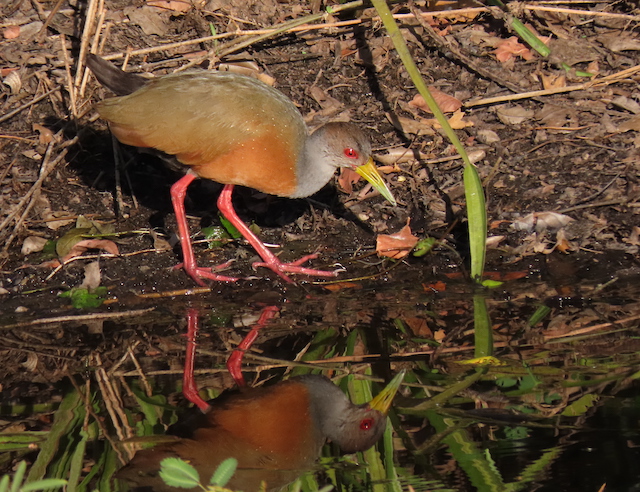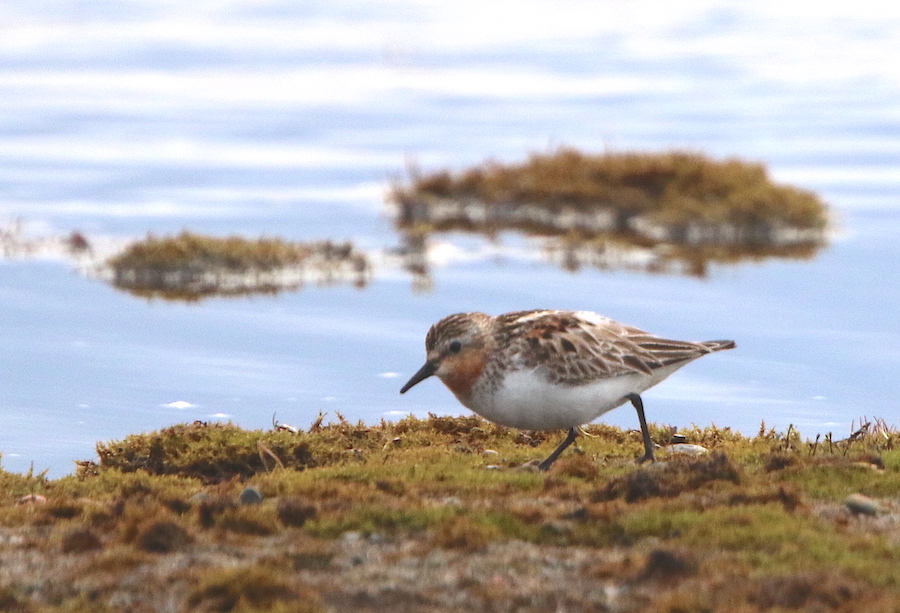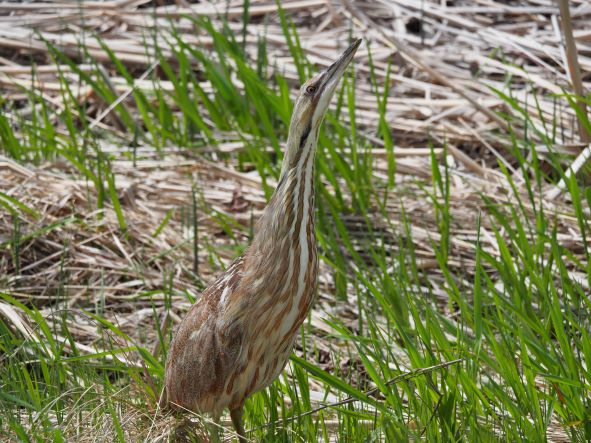From the Field
October 3:
Susan Myers: How I Saw One of the Greatest Enigmas in Ornithology
I am absolutely thrilled to be amongst the first birders, with my friend Yeo from Sarawak, to see the recently rediscovered Black-browed Babbler, a bird that until last year was considered to possibly be extinct after not being seen for almost 200 years. As the Oriental Bird Club declared “The Black-browed Babbler Malacocincla perspicillata, widely considered by experts the “greatest enigma in Indonesian ornithology”, has been sensationally rediscovered in the rainforests of Borneo more than 172 years after it was first seen.”
Yeo, my coleader on our Sarawak tours, and I travelled to Banjarmarsin in the Indonesian province of South Kalimantan on Borneo, from where we made a very long drive northwards to meet our local bird guides Slamet Tran Susanto and Muhammad Suranto, who unfortunately must make a living by exploiting forest resources in order to support their families. It was they who first brought this bird to the notice of Indonesian birders who went on to bring the news to the rest of the world. The four of us set out to a small area of limestone karst forest, an island in a sea of oil palms. After a short walk we heard a bird and soon had a pair perched at eye level in the forest, where we spent a couple of hours in the company of four birds altogether. What an amazing experience to see a bird which I wrote about in my Field Guide to the Birds of Borneo with the words “known from one specimen probably collected in South Kalimantan, possibly extinct.” Definitely one of my all time career highlights!
We hope that more birders can visit the area and see this remarkable species at the same time as having minimal impact on its continued survival as well as contributing to the local economy in positive ways.
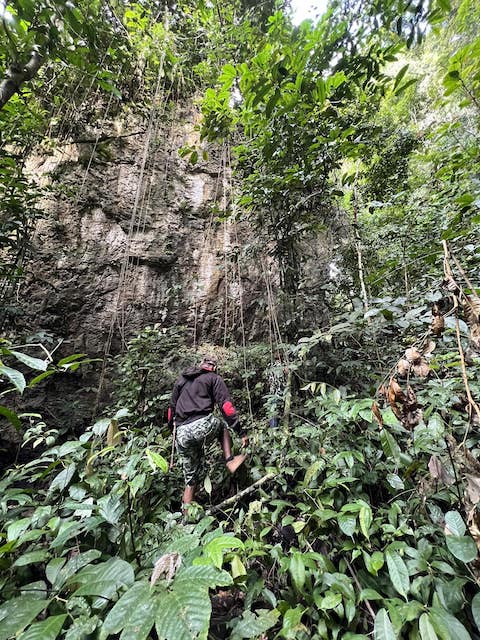
Climbing the karst.
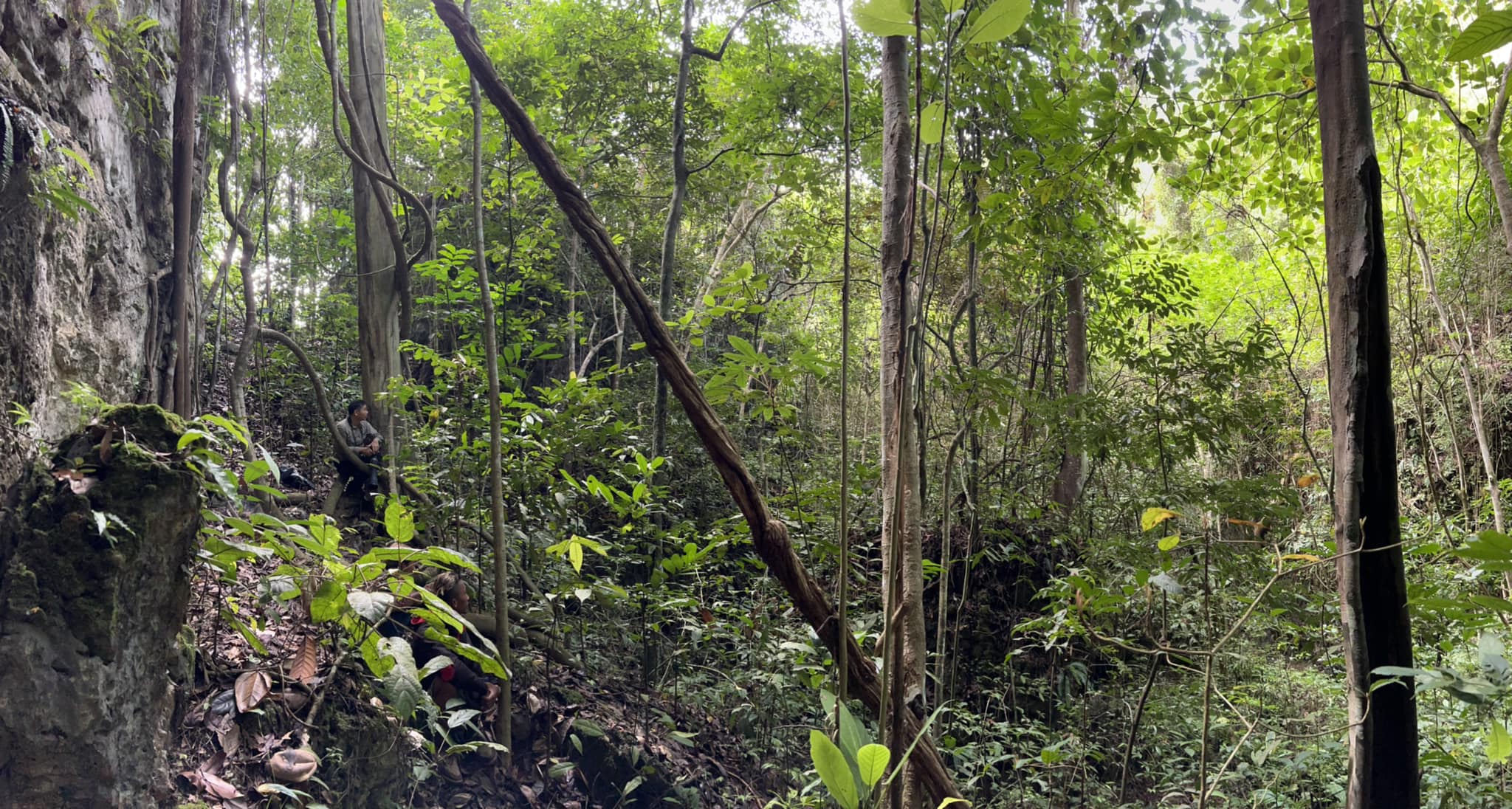
Waiting for the babbler.
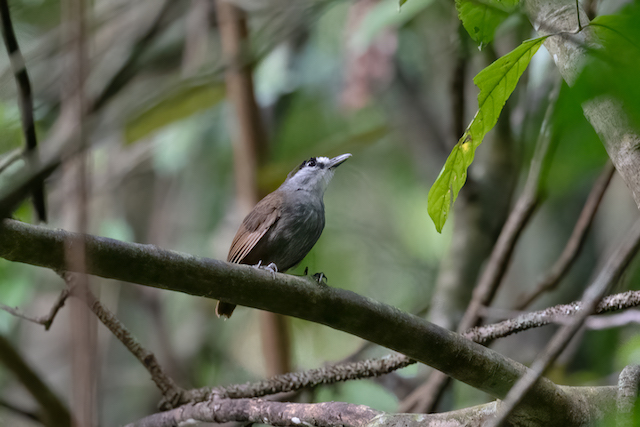
Black-browed Babbler
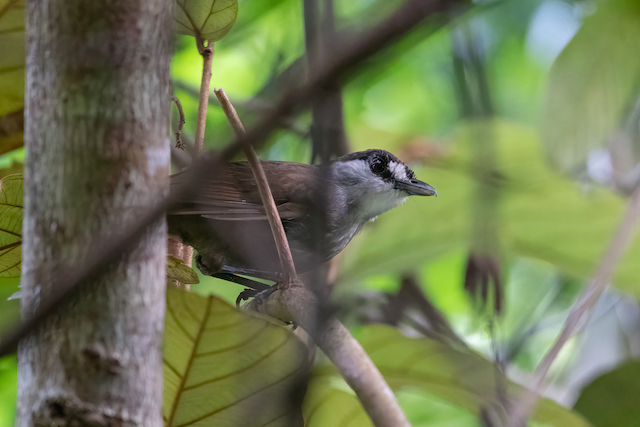
Black-browed Babbler
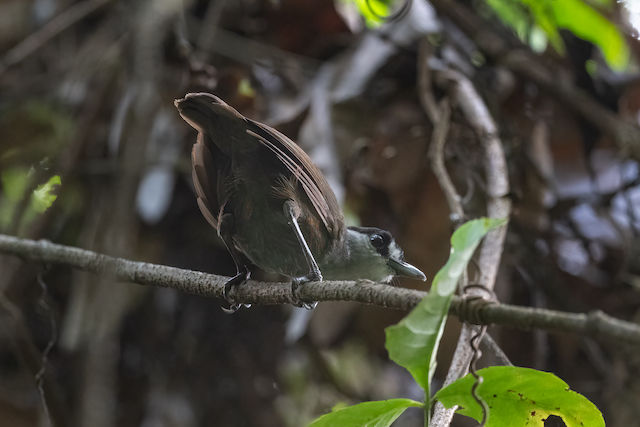
Black-browed Babbler

Celebrating with our guides and family
September 23:
Jake Mohlmann has just completed our always-popular Arizona & Utah tour and reports:
We just finished up our WINGS tour through northern Arizona and southern Utah, traveling just over 2,000 miles of paved and dusty roads, and coming across 205 species of birds while doing it. The scenery was simply stunning, and the wildflower show was spectacular throughout our entire journey proving the parched landscape received some good rains this year.
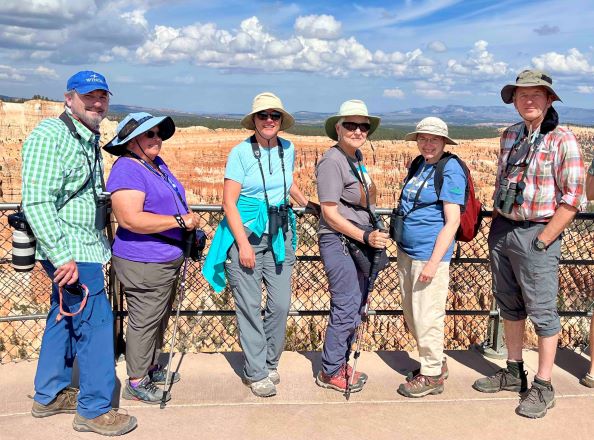
Our group enjoying Bryce Canyon’s famous amphitheater.
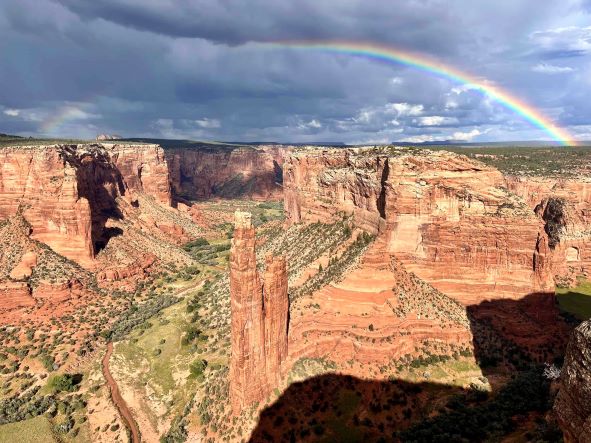
Rains brought a rainbow over Canyon de Chelly’s Spider Rock.
A complete surprise occurred when the group found not one, but two different White-winged Crossbills high up on the North Rim of the Grand Canyon. If accepted, this would constitute the third (and fourth) record for this species on Arizona’s state list. Not an easy task considering how many birders cover this popular birding state every year.
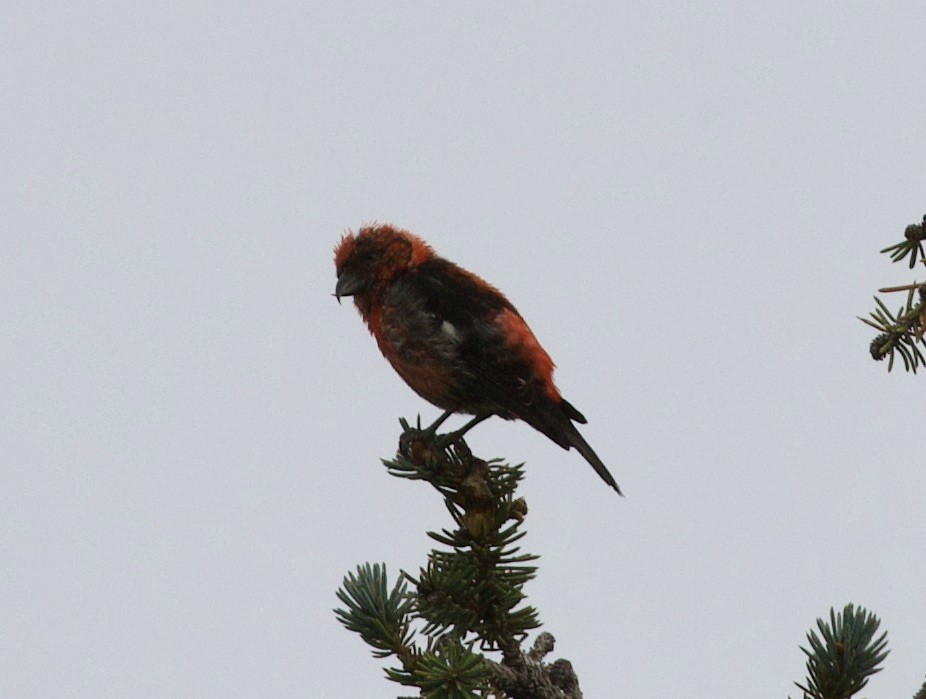
This male White-winged Crossbill will likely be Arizona’s fourth record.
There were many migrant birds we crossed paths with during our adventure. The southwestern Willow Flycatcher was seen multiple days, as well as other empidonax species like Dusky and Hammond’s. Even Say’s and Black Phoebes were seen multiple days rounding out our large flycatcher list for the tour.
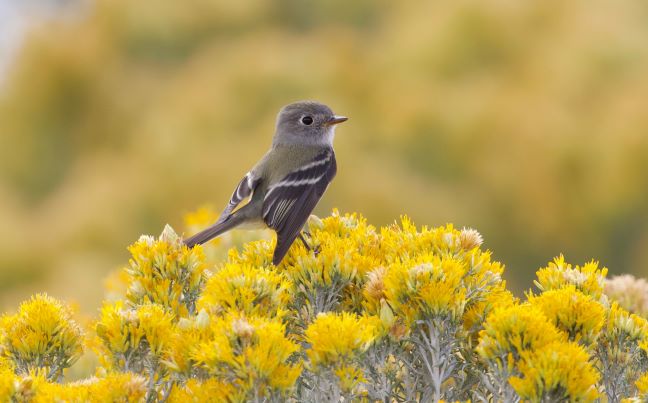
Hammond’s Flycatcher strikes a beautiful pose.
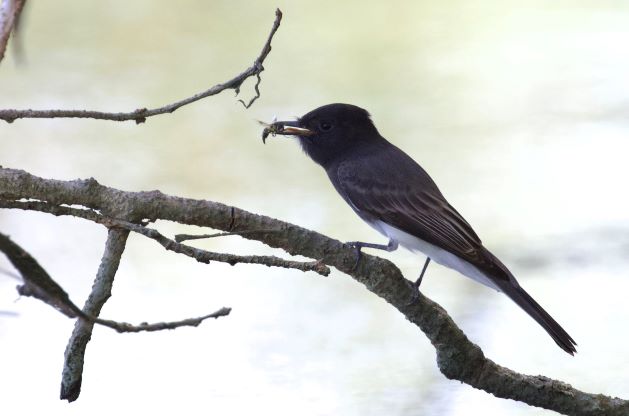
A Black Phoebe reduces the fly population by one.
Some days birds filled the skies. Whether it was flocks of American Robins plucking ripe juniper berries, or troops of Pinyon Jays flying over in formation, or even multiple sallying Townsend’s Solitaires all utilizing the same perch.
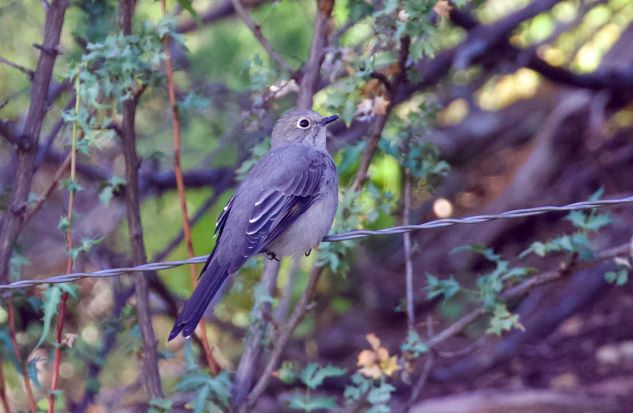
This Townsend’s Solitaire at Wenima was ‘whisper singing’.
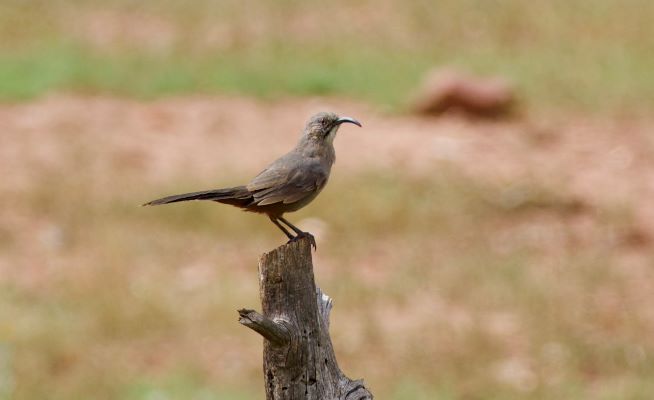
Crissal Thrasher was seen well. A statement not said often! A major highlight was getting amazing looks at a Crissal Thrasher along the Arizona Strip. This species can be extremely difficult to get a look at, and seems to taunt birders as it calls incessantly only to remain concealed in frustration.
Mammals tend to also be a highlight on this tour as it traverses latitudes from 1,100 feet in the Sonoran Desert all the way up to over 10,000 feet amongst alpine meadows and spreading coniferous forest. Although there’s a chance to see two subspecies of Bighorn Sheep on this tour, we were elated to see one. A pair of rams were roadside first thing in the morning and didn’t seem bothered with our presence.
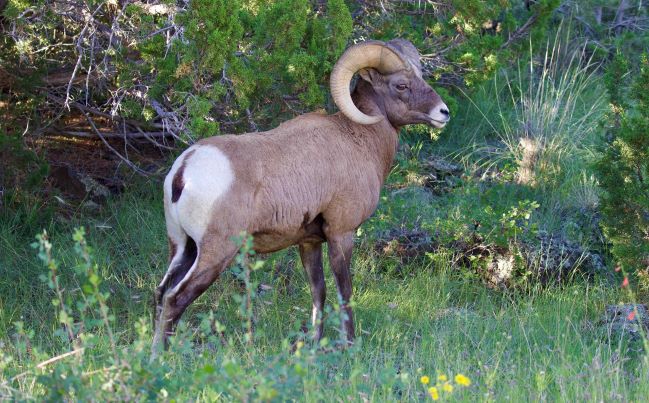
A roadside ram Rocky Mountain Bighorn Sheep.
A lot of the small mammals are nocturnal, but the ones we normally get to see on this tour often include the small Utah Prairie Dog, ubiquitous Rock Squirrel and Gray-collared Chipmunk. This chipmunk is endemic to east-central Arizona and southwest New Mexico, and awfully cute.
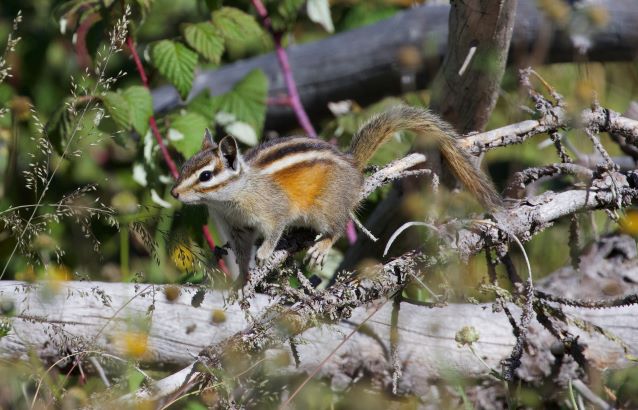
Gray-collared Chimpmunk in the White Mountains.
Cold-blooded creatures are few and far between once one leaves the desert, but we were lucky enough to add Plains Spadefoot Toad to the list at an ephemeral pond north of Flagstaff, as well as a Wandering Garter Snake at Sipe Wildlife Management Area.

Wandering Gartersnake sunning on a log.
A highlight in the odonatan department was a huge Common Green Darner whose wings seemed to glitter metallically as it winged along Luna Lake’s shore oblivious to the human onlookers wrought with admiration.
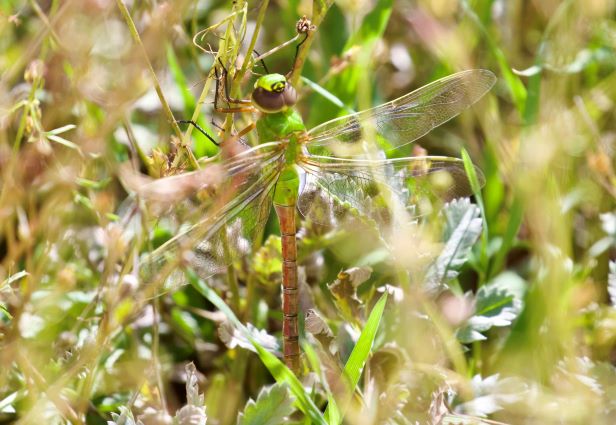
Common Green Darner seeking refuge amongst grass.
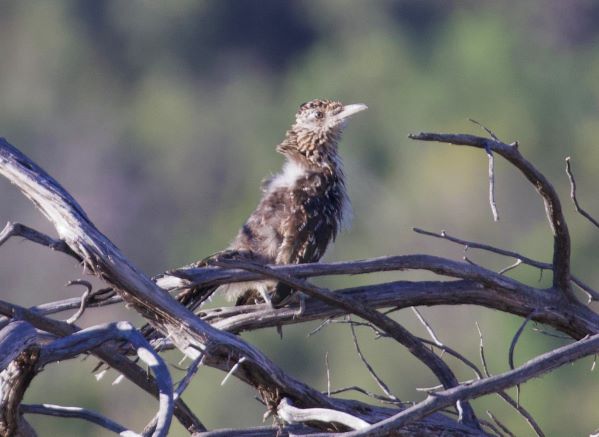
This Greater Roadrunner was a hit -- found while sunning in the early morning light.
A major highlight was getting amazing looks at a Crissal Thrasher along the Arizona Strip. This species can be extremely difficult to get a look at, and seems to taunt birders as it calls incessantly only to remain concealed in frustration.
August 31:
Rich Hoyer reports from our second Mato Grosso/Cristalino tour in Brazil
Our second Marvelous Mato Grosso tour this summer was in reverse order, so our first six days of birding in the Pantanal was an almost overwhelming barrage of birds and animals.
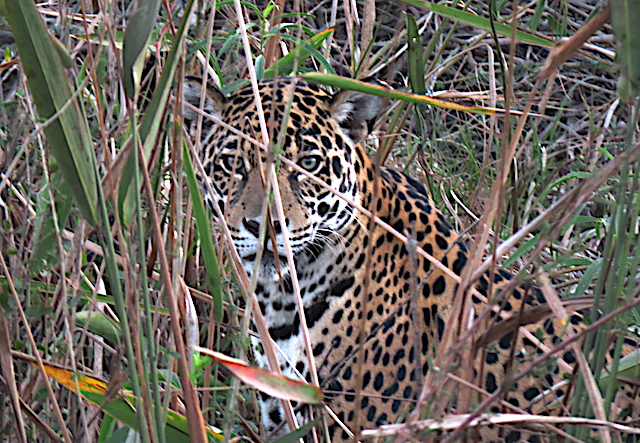
Though jaguar is certainly a target, even this modified itinerary was supposed to have saved this amazing animal for a Day 4 highlight. Yet before this tour was even six hours old, we jumped the gun by surprising a jaguar on the entrance road of our first lodge. The shy Nana, as we found she was named, had been seen only once before, photographed and named by researchers on a neighboring ranch only a couple weeks earlier.
Gray-cowled Wood-Rails were confiding and seen every day for a full week.
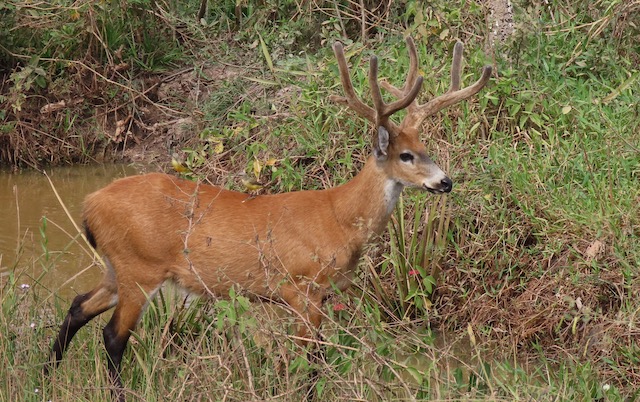
A Marsh Deer with a pair of Cattle Tyrant tick-eaters on its back posed nicely.
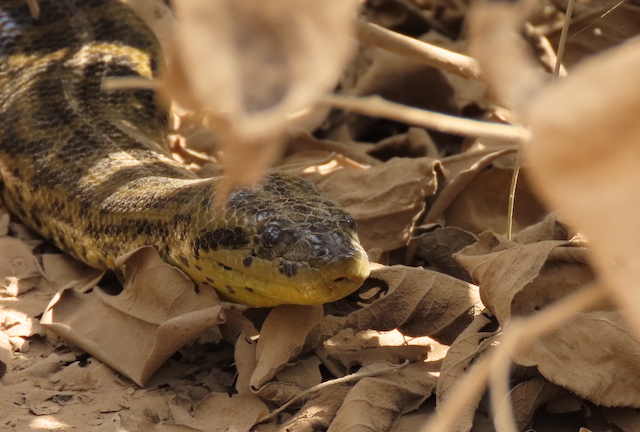
A Yellow Anaconda hunted along the side of the road, causing all passing vehicles to stop.
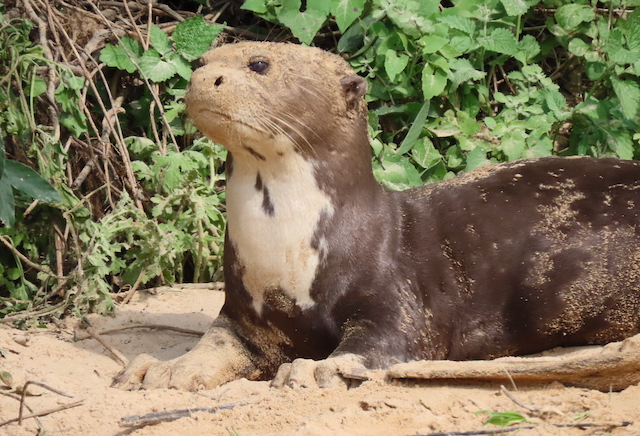
Our boat rides on the Cuiabá River resulted some fantastic experiences with families of Giant Otters.
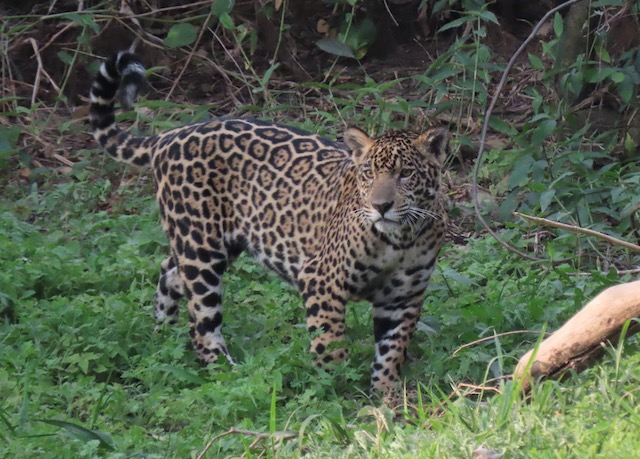
And in the end, we did have more amazing jaguar sightings. This young male, named Hays, was bothered by all the deer flies and rambunctiously came down to the river’s edge for a drink.
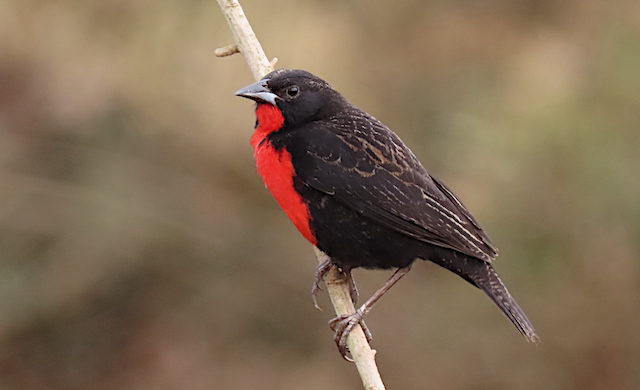
After the Pantanal, we made our way to Cristalino Jungle Lodge at the far northern end of the state, where Red-breasted Meadowlarks showed nicely on the road north of town.
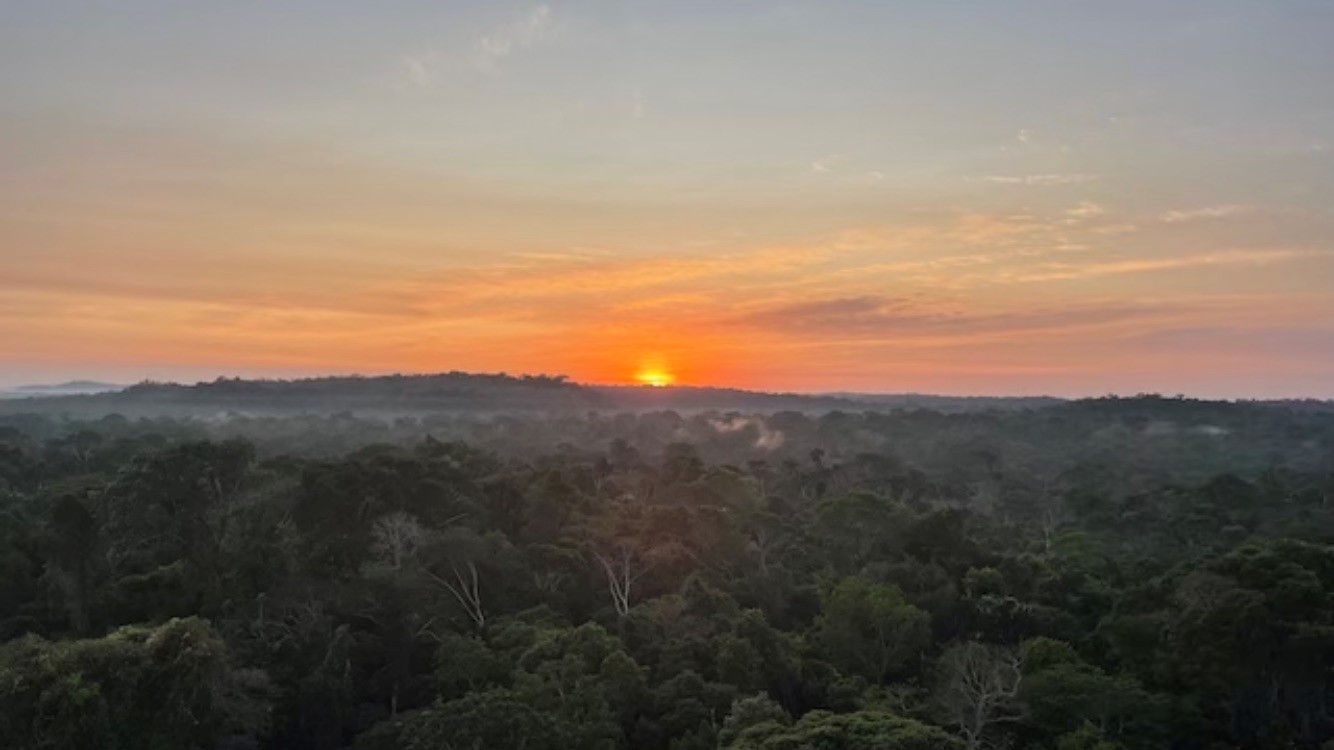
Birding from the two canopy towers at Cristalino was a highlight here, and sunrise with this view over one of the richest ecosystems in the word was a sight to behold.
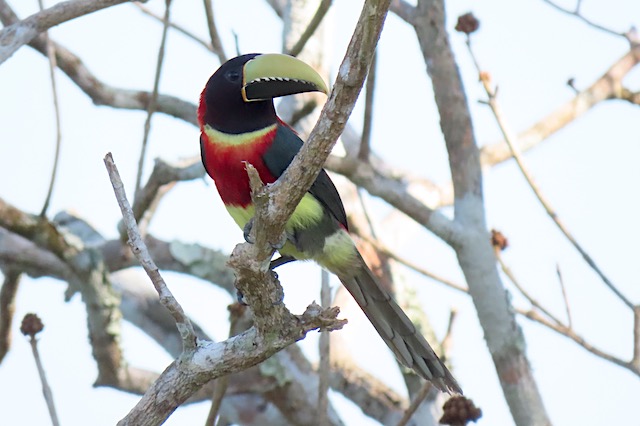
From the tower we had great views of Red-necked Aracari.
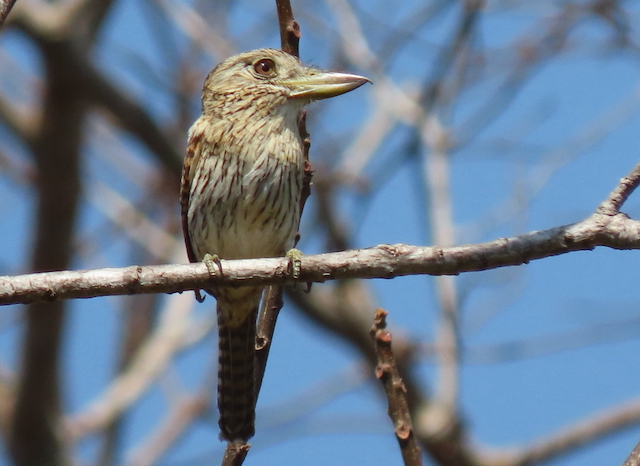
At the top of the granite dome called Serra I, a pair of Eastern Striolated-Puffbirds responded readily to a whistled imitation of their sad song.
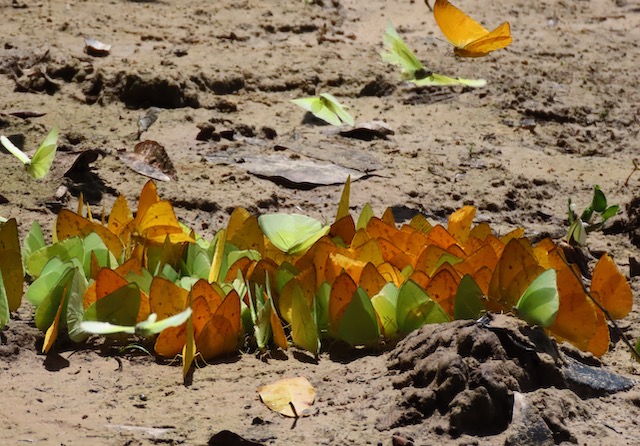
If you like colorful insects, the Amazon is the place to be. Vibrant puddle parties made up of several species of whites and sulphurs were often joined by various other species of butterflies.
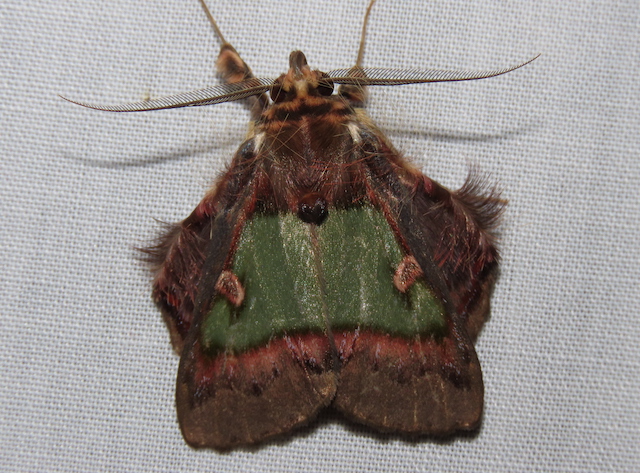
A moth sheet had a few interesting things to see each evening, such as this curious moth called the Emeraldine.
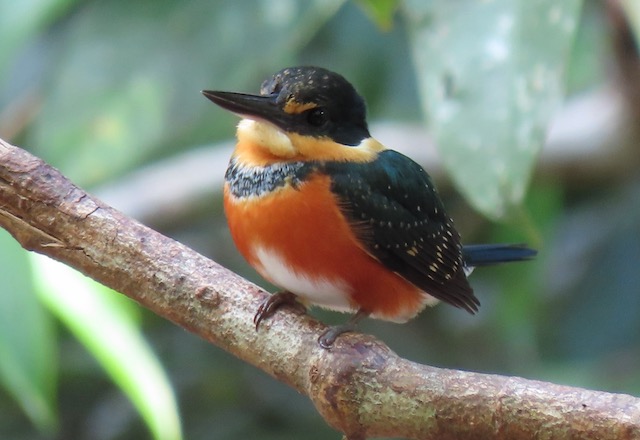
During this hot, dry time of year, bird baths within the forest were a great place to get views of difficult birds, and this confiding American Pygmy-Kingfisher was one of them.
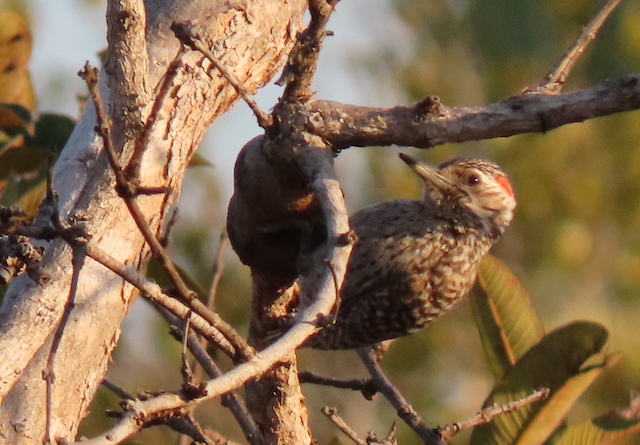
We finished the tour at the Chapada dos Guimarães area, a totally different ecosystem of dry scrub, woodland, and grasslands with some amazing birds. We were surprised on our first morning by this scarce Checkered Woodpecker.
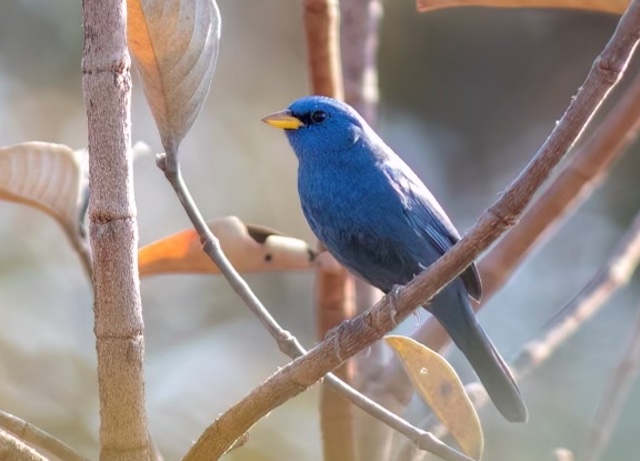
But the most exciting bird came on our last morning when this Blue Finch came in after nearly an hour of hopeful searching. Photo by John Sullivan.
August 23:
Jon Feenstra reprorts from Sani Lodge, Ecuador
We just got back from a fun and successful tour to the lowland Amazon Rainforest of eastern Ecuador. We were based for a week at Sani Lodge, as guests of the indigenous Sani Kichwa people who paddled us through their flooded varzea forest and took us to some great birding. Highlights included such signature birds as bizarre Hoatzins, sublime Agami Heron, six species of puffbird, five species of trogon, the local Cocha Antshrike, some manakins, and woodcreepers, and many more. Everyday was an adventure, some planned and some unplanned, but all part of the experience.
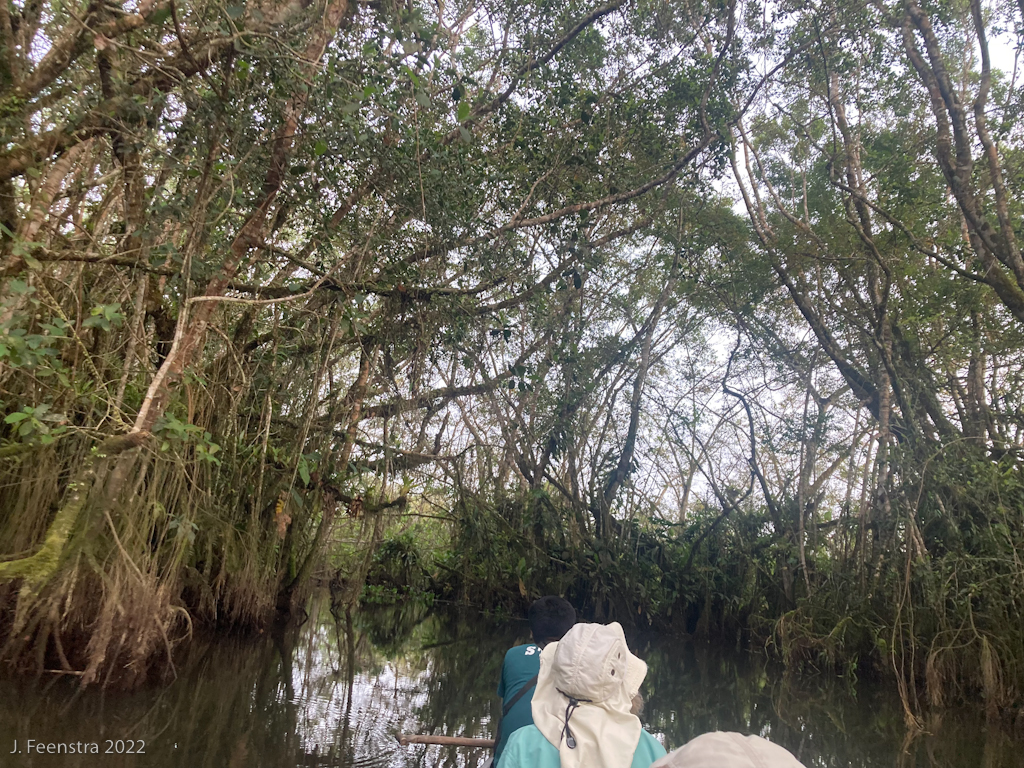
One of our many canoe-rides through the varzea forest around the lodge.
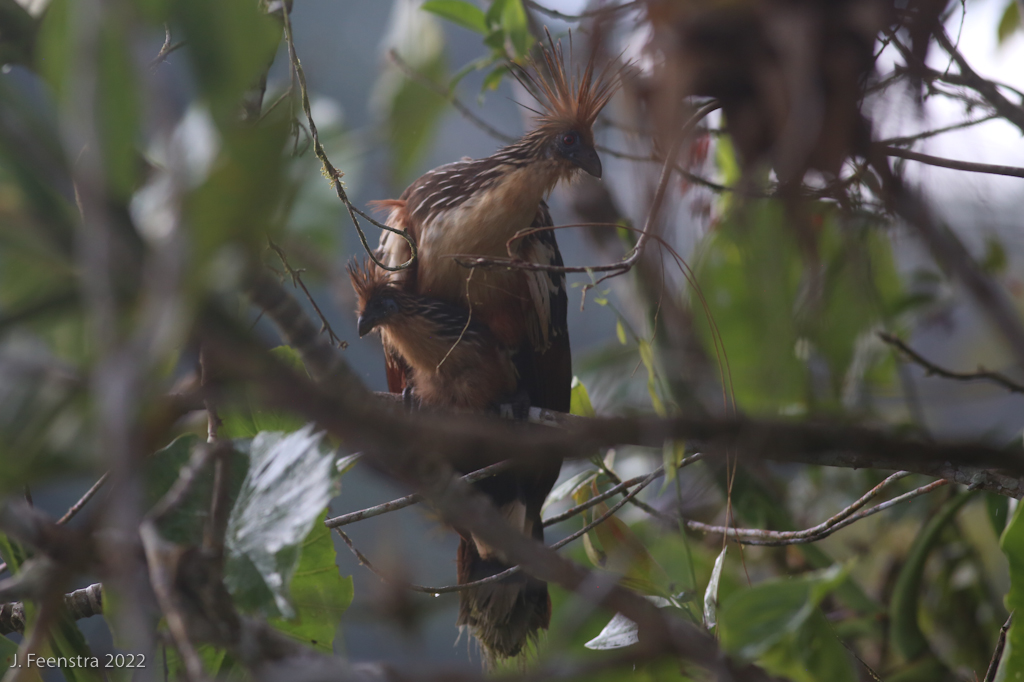
This adult Hoatzin somehow fit this nearly-grown juvenile Hoatzin into its breast feathers to keep it even warmer.
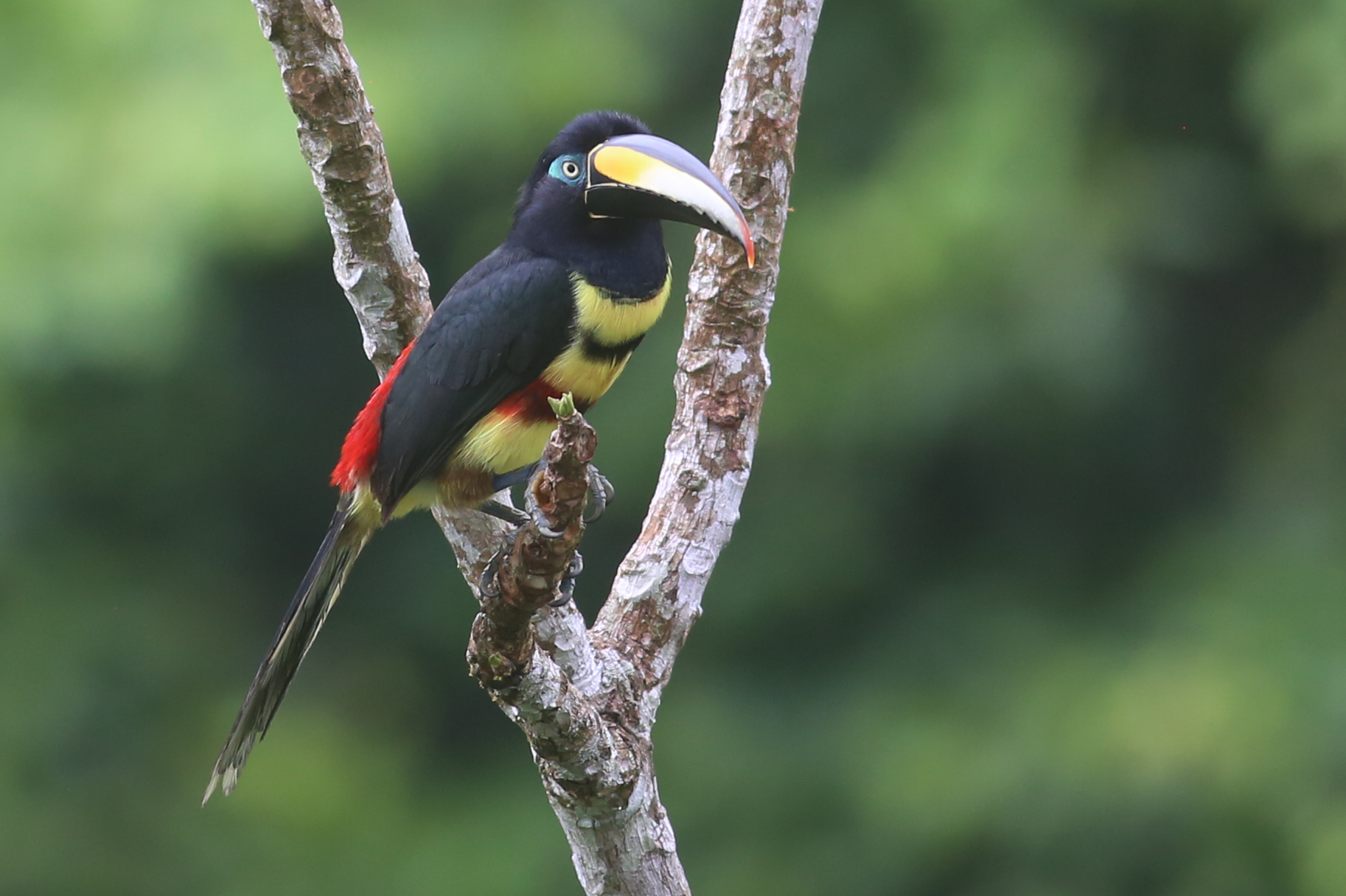
Many-banded Aracari was one of six species of toucan we saw, mostly from the lodge’s canopy tower.
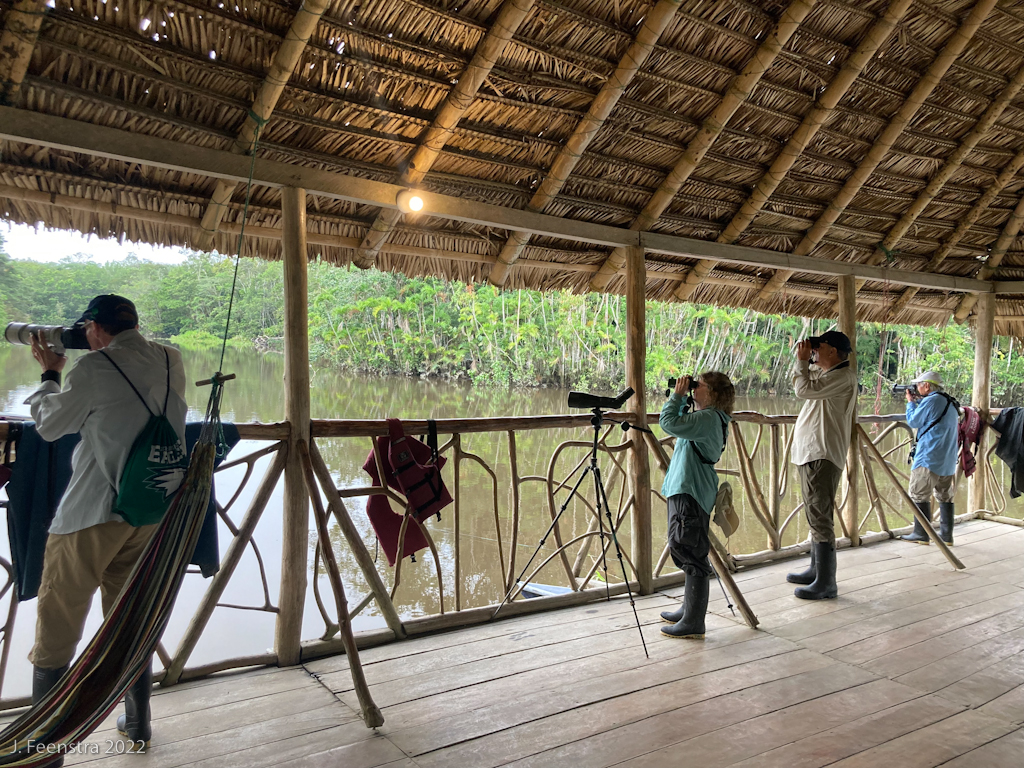
When raining or really sunny or pretty much any other time, the canopies parts of the lodge overlooking the lagoon were an easy place to watch birds, bats, caiman, turtles, butterflies, and whatever else happened to be hanging around.
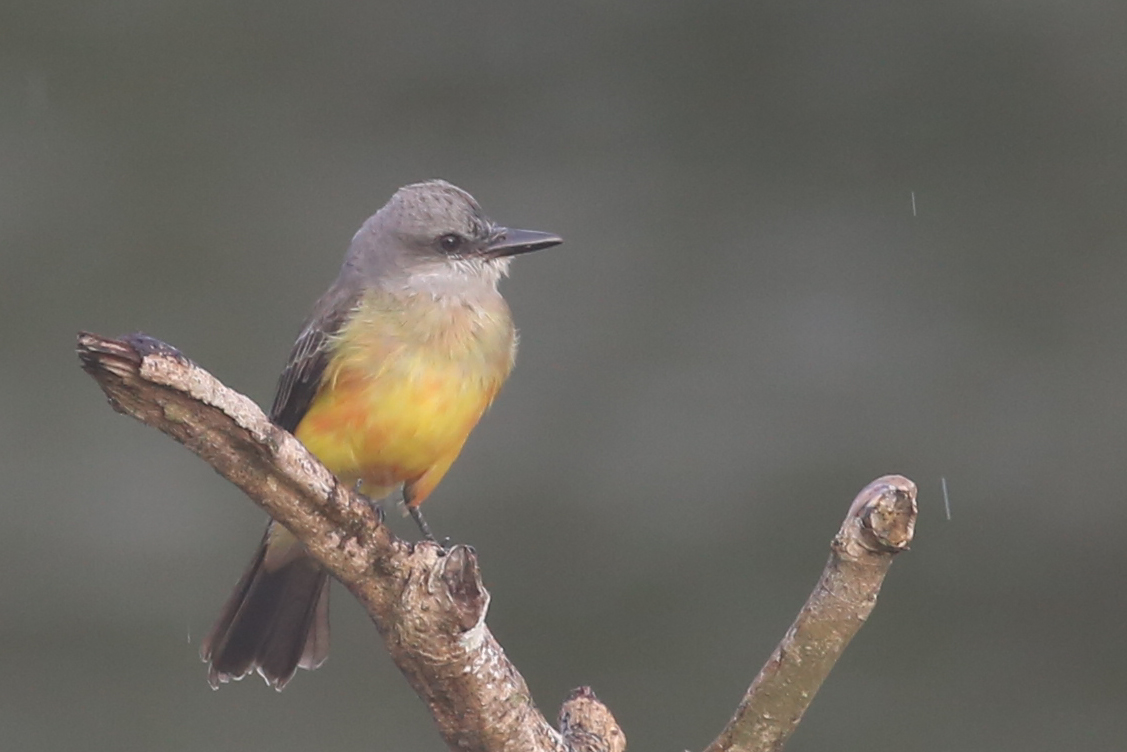
This orange-bellied (hyperchromatic?) Tropical Kingbird was a regular patron of some sticks just off the lodge porch. We got to study this fascinating weirdo just about every day.
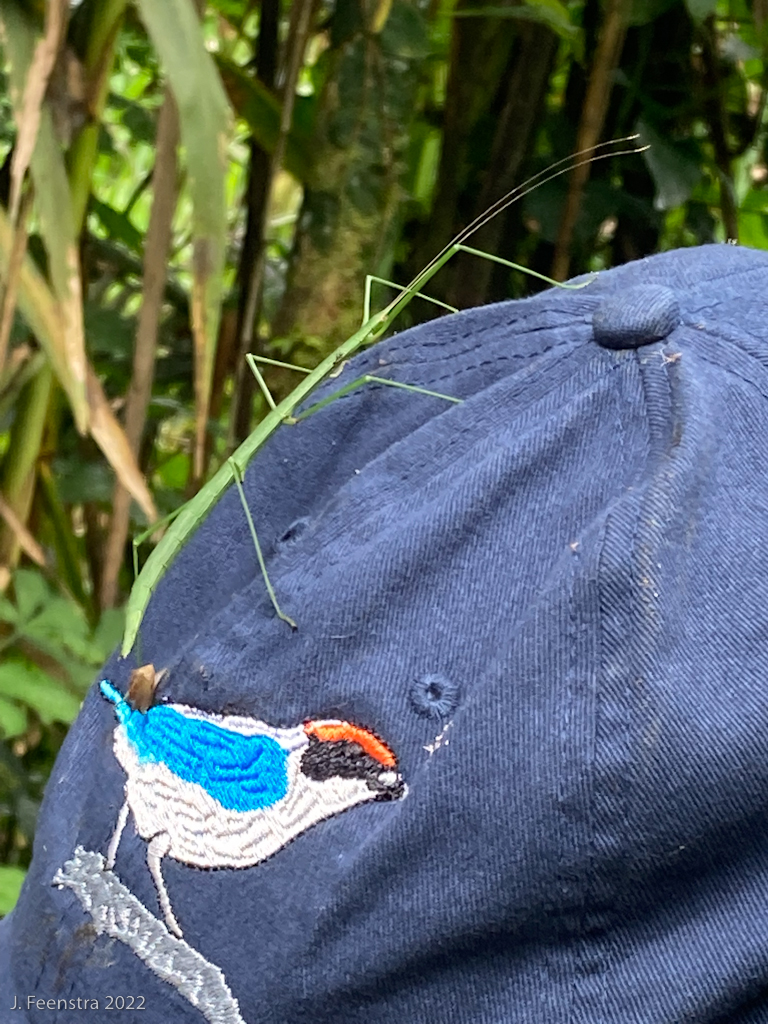
Well camouflaged by the greenery of the forest, this stick insect was a lot easier to see when it wandered onto a hat. The fauna of the Amazon is more than just birds, and we always stopped for the interesting crawlies.
August 12:
Rich Hoyer reports from the Mato Grosso region of Brazil
The first of my two Mato Grosso tours this past month was an amazing explosion of birds, mammals, reptiles, and all things natural history. In the Cerrado ecoregion of Chapada dos Guimarães, a field with over 40 Greater Rheas was followed by a close sighting of the always spectacular Red-legged Seriemas was a favorite of the tour.
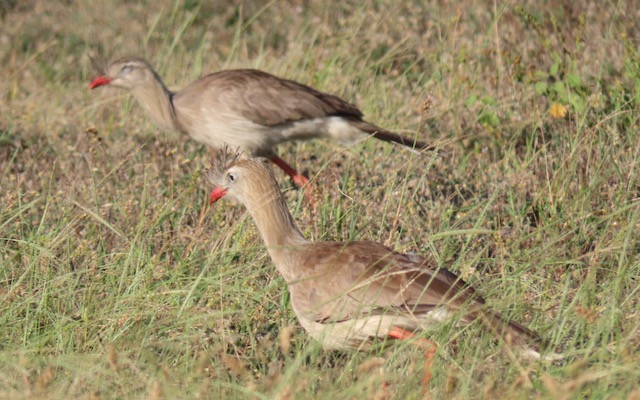
Our four full days in the Amazonian rainforest at the incomparable Cristalino Jungle lodge was far too short to experience the full diversity, but we fared very well, seeing a rare Crested Eagle from one of the two canopy towers.
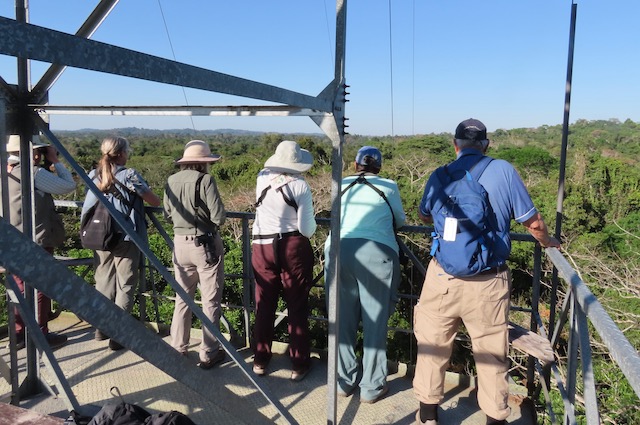
We also were treated to an afternoon bathing party of normally hard-to-find forest understory birds, such as the regional endemic Bare-eyed Antbird.
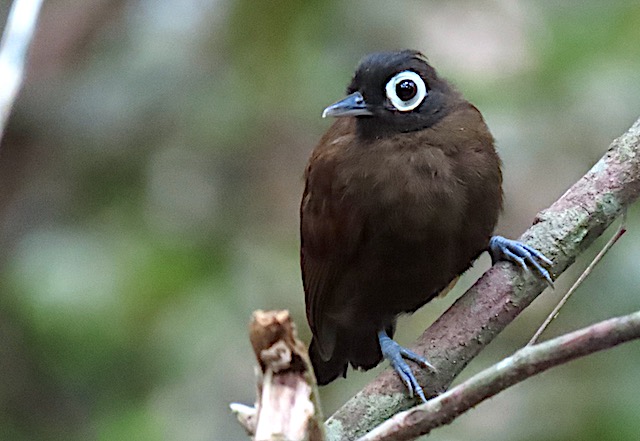
We then moved to the Pantanal, an ecoregion of woods, fields, lakes, rivers, and marshes that was packed full of wildlife. We had views of five jaguars our first morning, one being the well-known female Medrosa, who was still roaming around with her cubs from the previous year.
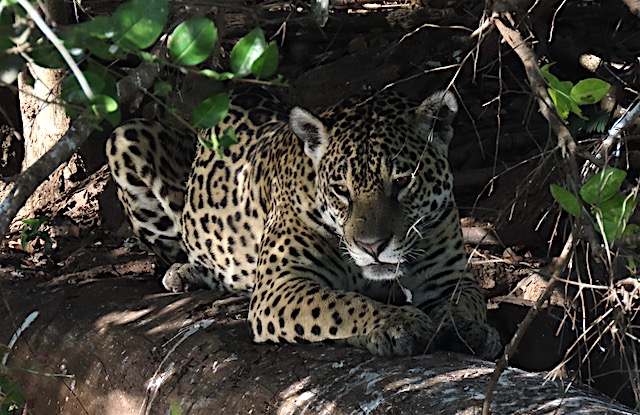
It’s hard to imagine a birds more stunning than the many Sunbitterns, Hyacinth Macaws, and Yellow-billed Cardinals we saw in the Pantanal, but a Scarlet-headed Blackbird right next to the road was hard to beat.
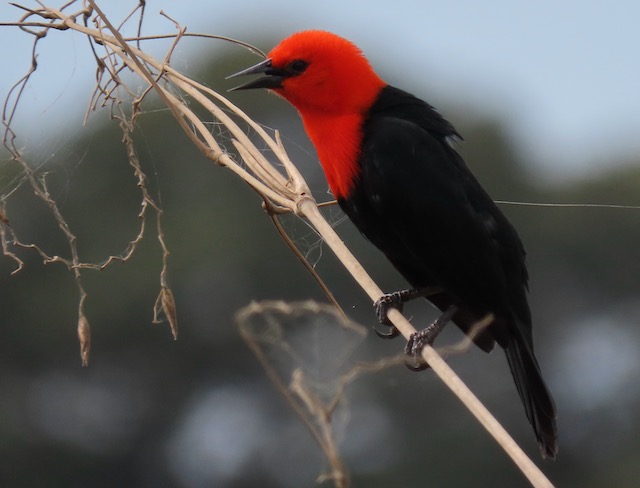
Our fourth utterly different ecosystem was the Atlantic Rainforest of the Iguazú area just across the border into Argentina. It had been a few weeks since a cold front had come through, and butterflies were at their peak in numbers, with stunning puddle parties diverting our attention from the birds again and again.
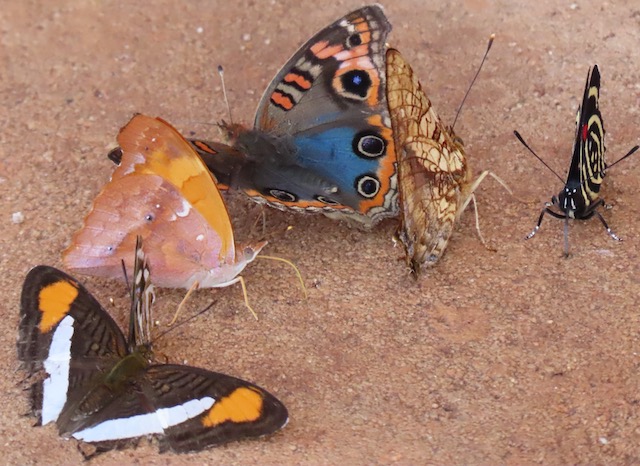
We certainly saw the spectacular falls (amongst throngs of mostly Argentinian tourists) but some birds still took center stage, such as Black-fronted Piping-Guan, Sharp-tailed Streamcreeper, Plush-crested Jays, and an intently feeding Robust Woodpecker in the forest understory.
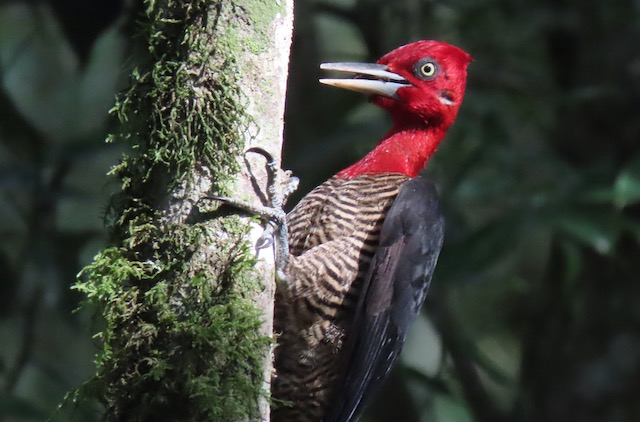
July 25:
Rich Hoyer reports from Galapagos
A very happy group of participants enjoyed our first Galapagos cruise in six years, and what a marvelous tour it was. Walks on the various islands featured a lengthy mating by two Swallow-tailed Gulls, mating Great Frigatebirds, and our gingerly stepping around nests of Blue-footed Boobies with young, placed right by the trail. We walked past pairs of breeding Waved Albatrosses while a show of flying birds in perfect light were joined by Nazca Boobies and Red-billed Tropicbirds at the cliff edge behind us. We were gobsmacked by Giant Tortoises, tickled by abundant and tame Yellow Warblers, and were intrigued by the stories of human settlement and early scientific explorations on the islands. We snorkeled nearly every day, seeing dozens of fascinating fish while swimming with Marine Iguanas, Green Sea Turtles, and playful Galapagos Sea Lions. We were very fortunate to have worked with the Nemo III staff who applied with the national park for a variance from their usual itinerary to cater to us birders, and we saw 29 of the possible 30 endemics, missing only Large Tree-Finch, which seems to be getting scarcer every year. We saw the elusive Galapagos Rail, the very localized Brujo Flycatcher and Galapagos Martin, and so many other fascinating critters, from the endemic Galapagos Saltbush Moth to a massive school of Common Bottlenose Dolphins around our boat. With an amazingly competent and very helpful boat crew, it was a trip to remember, and I look forward to my next tour in November 2024. https://wingsbirds.com/tours/galapagos-islands-1/
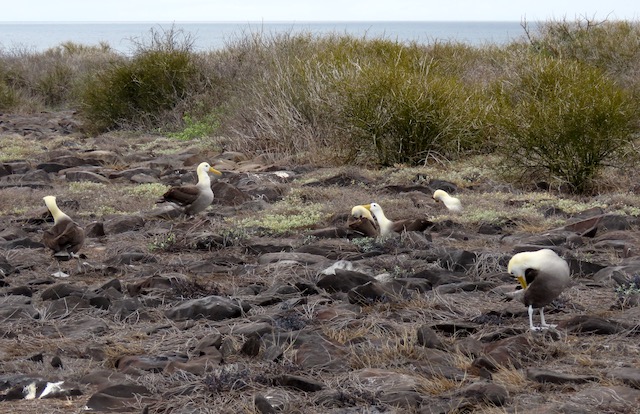
Waved Albatross
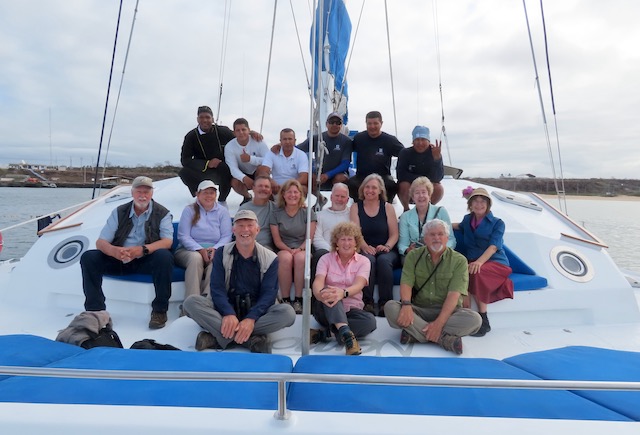
Happy crew on the Nemo III
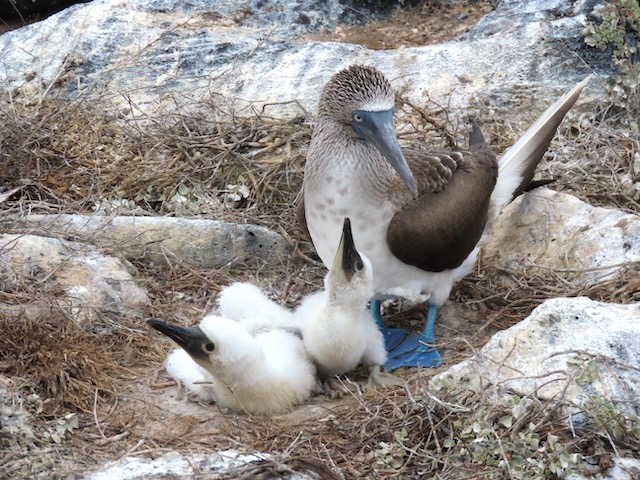
Blue-footed Booby
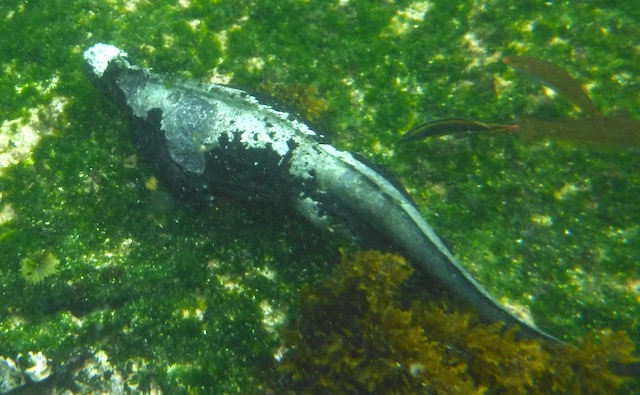
Marine iguana (Amblyrhynchus cristatus)
July 20:
Syke Haas reports "from the waves" off the West Coast of the US:
In April, WINGS BIRDING TOURS boarded the cruise ship Discovery in the Port of L.A. for a short but sweet voyage up the Pacific to Vancouver, BC. With two full and one half day at sea, we spent most of our time just off the continental shelf looking for rare seabirds, of which we found plenty of. A handful of Cook’s Petrels were observed off San Luis Obispo, while we were lucky enough to have 8 Hawaiian Petrels and 4 Laysan Albatrosses from mid-California up into southern Oregon. But the real stars of the show were the large numbers of Murphy’s Petrels we encountered with a total of 139 combined on our two full days at sea! Lots of other great seabirds though including Fork-tailed and Leach’s Storm-Petrels, Sooty, Short-tailed, Pink-footed and Black-vented Shearwaters, lots of Black-footed Albatrosses, all three Jaegers and flocks of migrating of Red-necked and Red Phalaropes as well as Sabine’s Gulls.
This ebird trip report will have the tour’s totals from this year. https://ebird.org/tripreport/51495
We’ll be running this highly popular tour again next spring aboard the cruise ship Eurodam beginning on April 24th, 2023. Click here to sign up for the tour! https://wingsbirds.com/tours/pacific-coast-seabird-cruises-from-southern-california-to-vancouver/
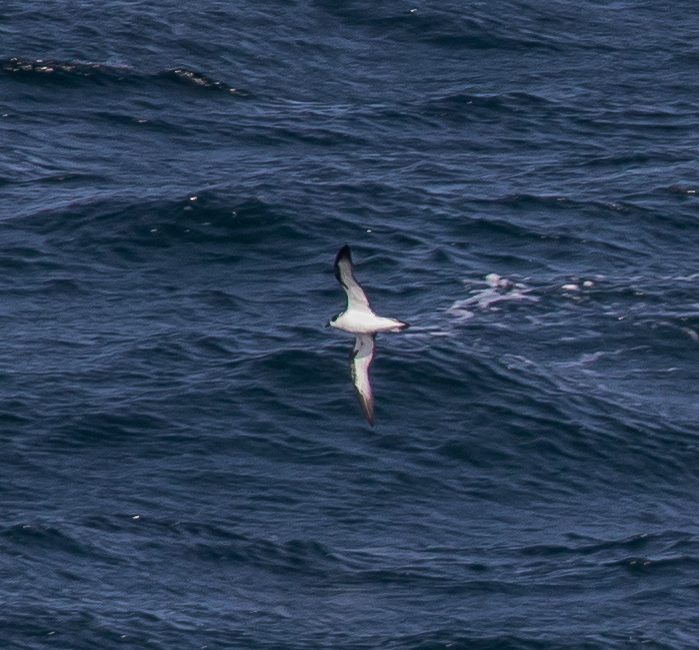
Hawaiian Petrel
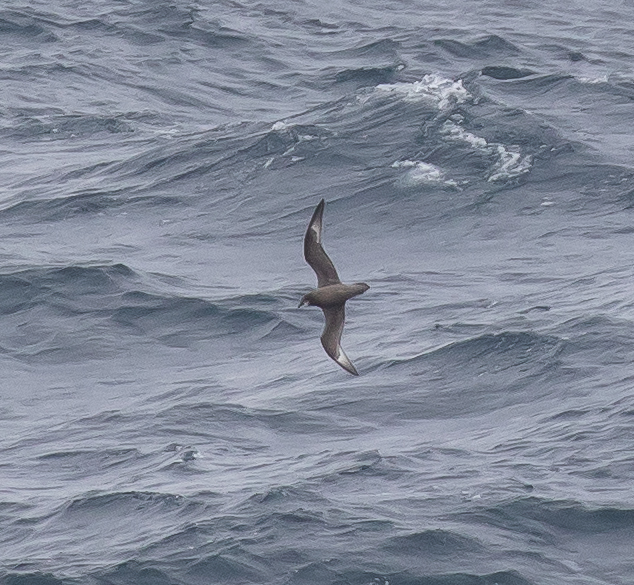
Murphy's Petrel
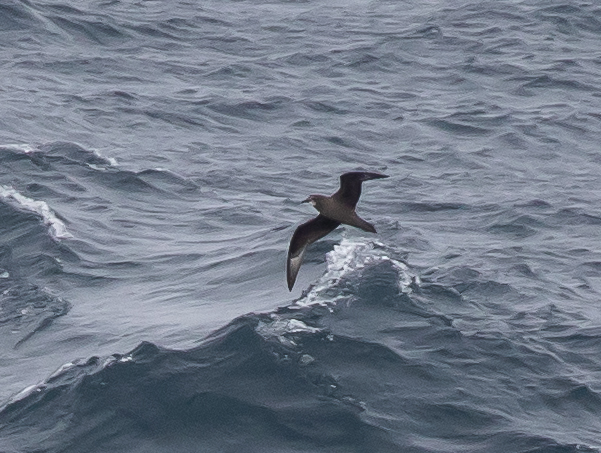
Murphy's Petrel
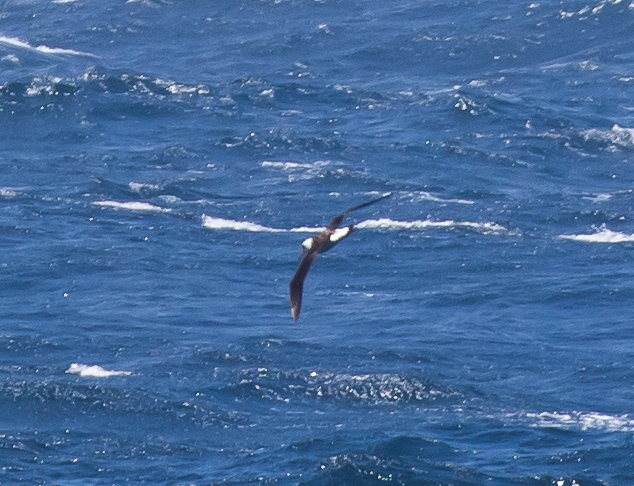
Laysan Albatross
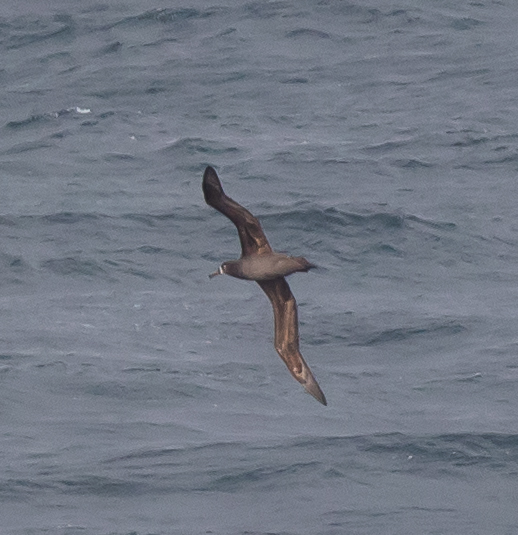
Black-footed Albatross
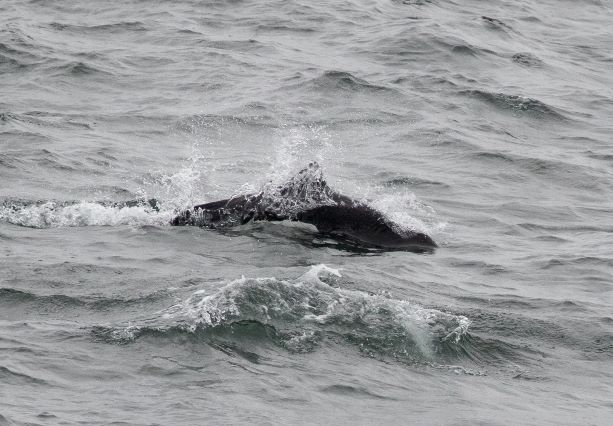
Dall's Porpoise
July 5:
Gavin Bieber reports from Alaska
Our 2022 Alaska Majesty tour really lived up to its name this year. Our scheduled trip out to the Pribilofs was cancelled at the last minute due to an island wide quarantine so we quickly came up with a short trip to Homer. The weather and scenery there were stunning, and our chartered boat trip out into Kachemak Bay was quite productive for close-range photos.
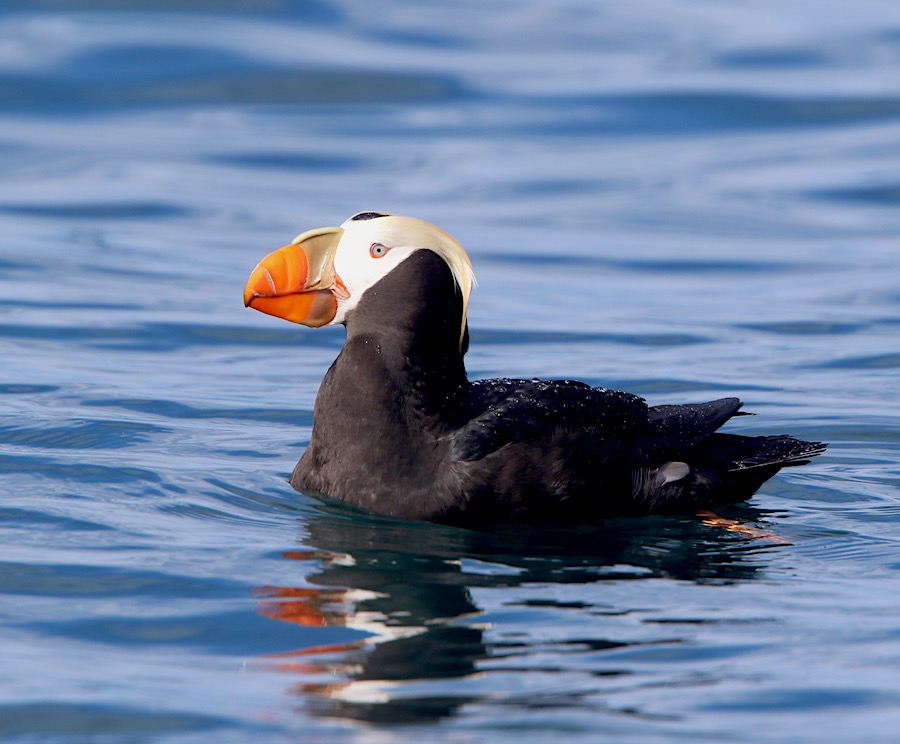
Tufted Puffin
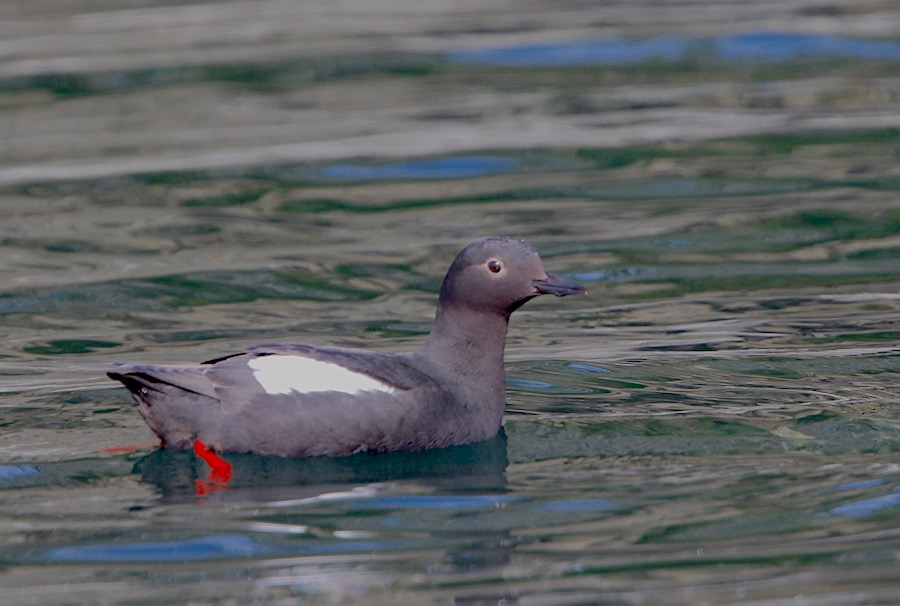
Pigeon Guillemot
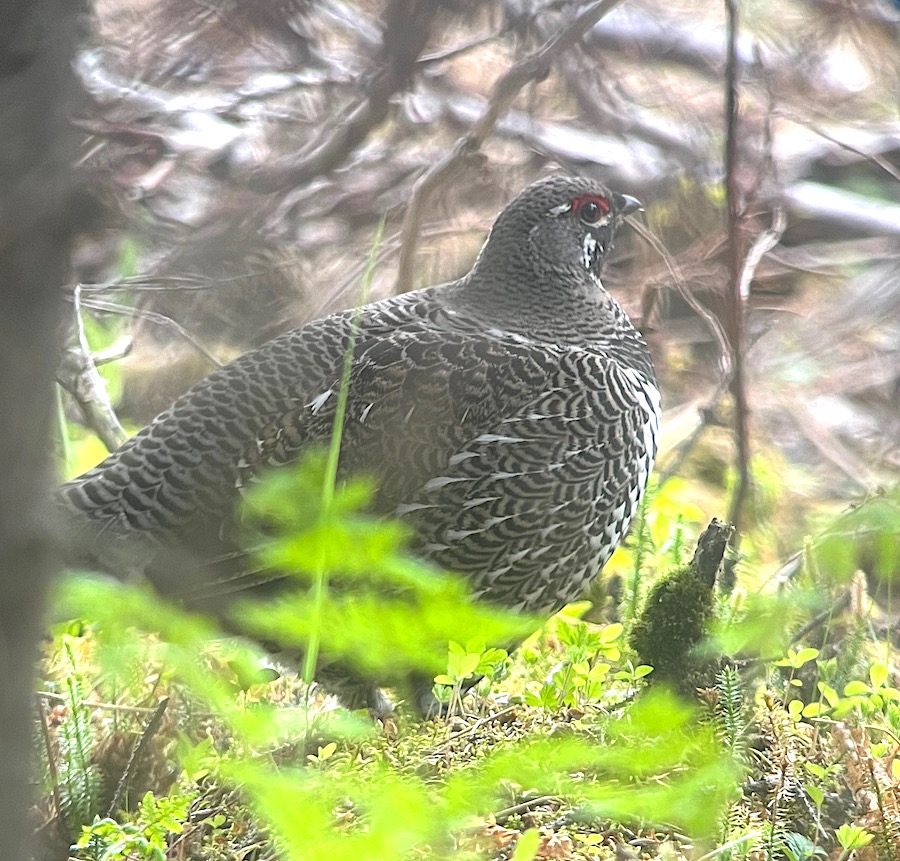
A ridiculously tame Spruce Grouse at the Wynn Nature Center was a nice bonus too!
Due to a landslide on the main Denali National Park road and Covid concerns on the park shuttle buses we opted to head to Fairbanks for the day instead.
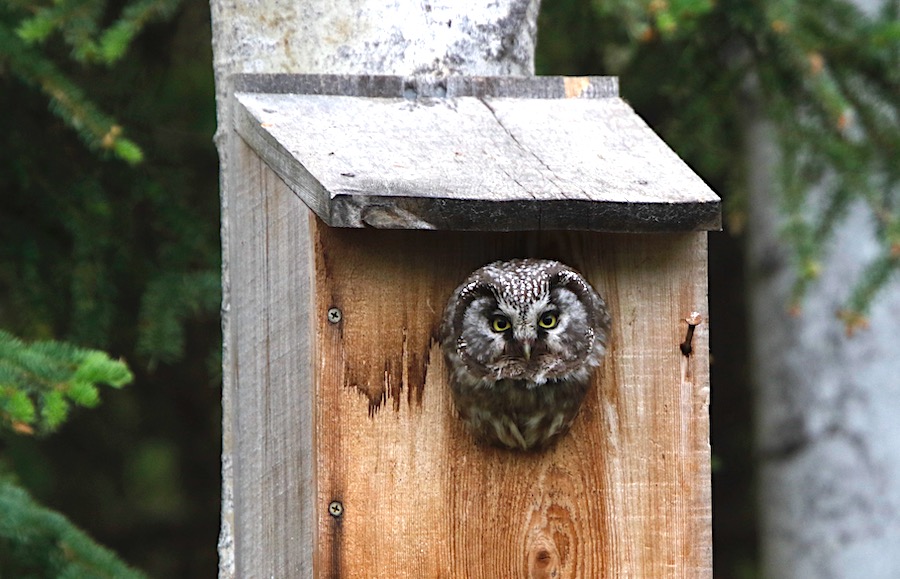
We were thrilled to spot a Boreal Owl in its nestbox,
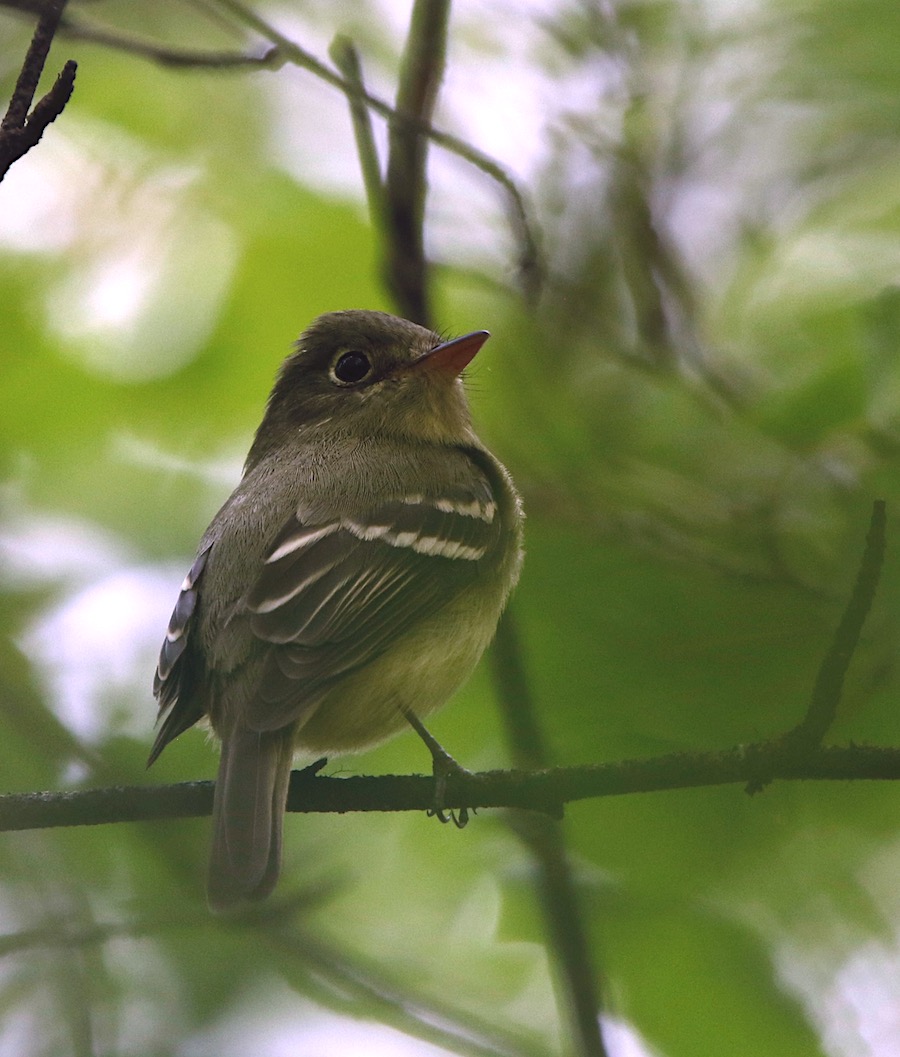
as well as a rare (in Alaska) Yellow-bellied Flycatcher; both species (and the Hammond's Flycatcher that we found north of Fairbanks as well) were write-ins for the tours cummulative list which stretches back over two decades of tours.
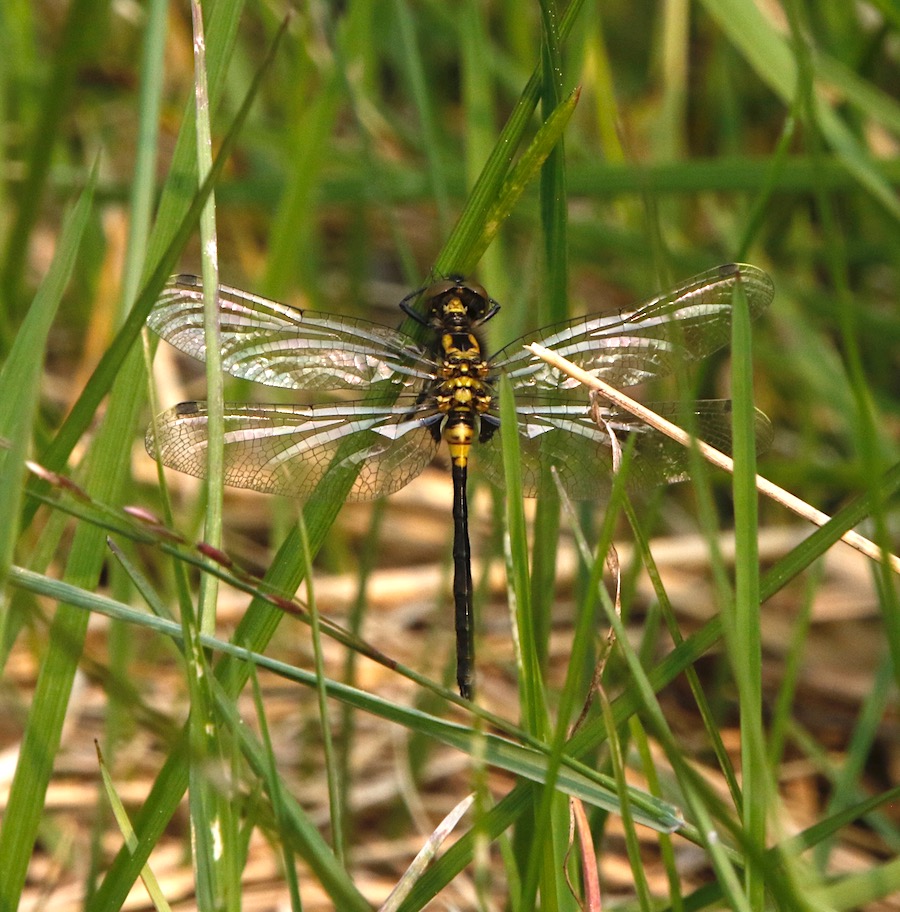
A bit south of Fairbanks we turned up this handsome Canada Whiteface, a scarce species in the state that before this sighting was only known from one location.
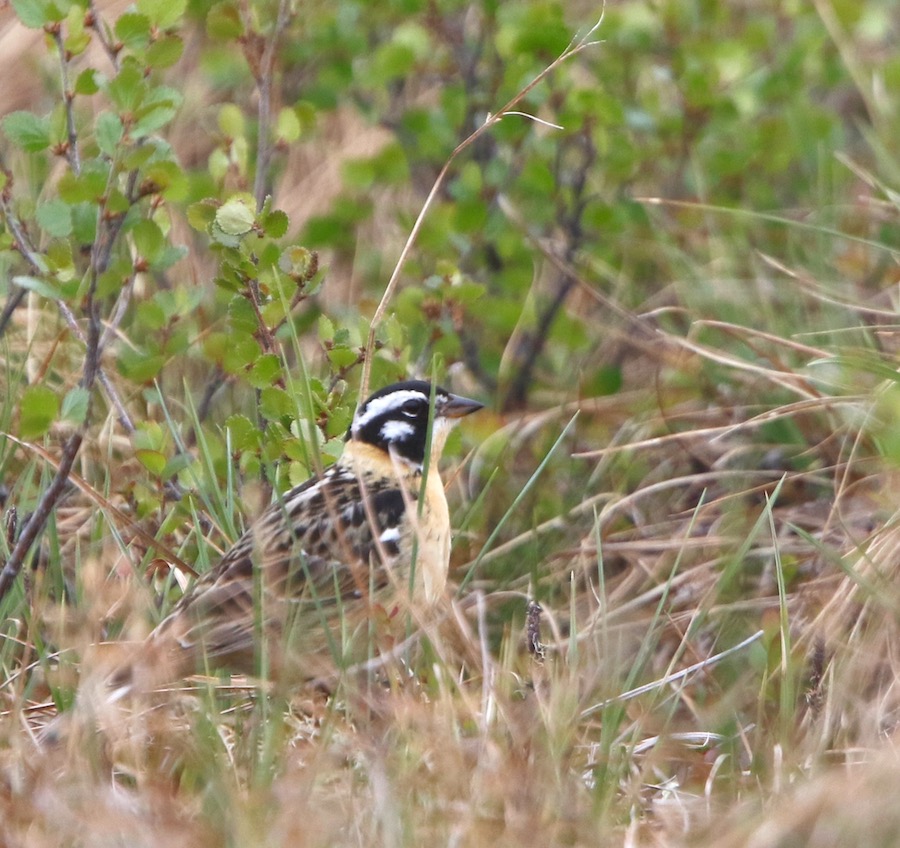
On the Denali Highway we enjoyed a close-up experience with the wily but stunning Smith's Longspur as well as
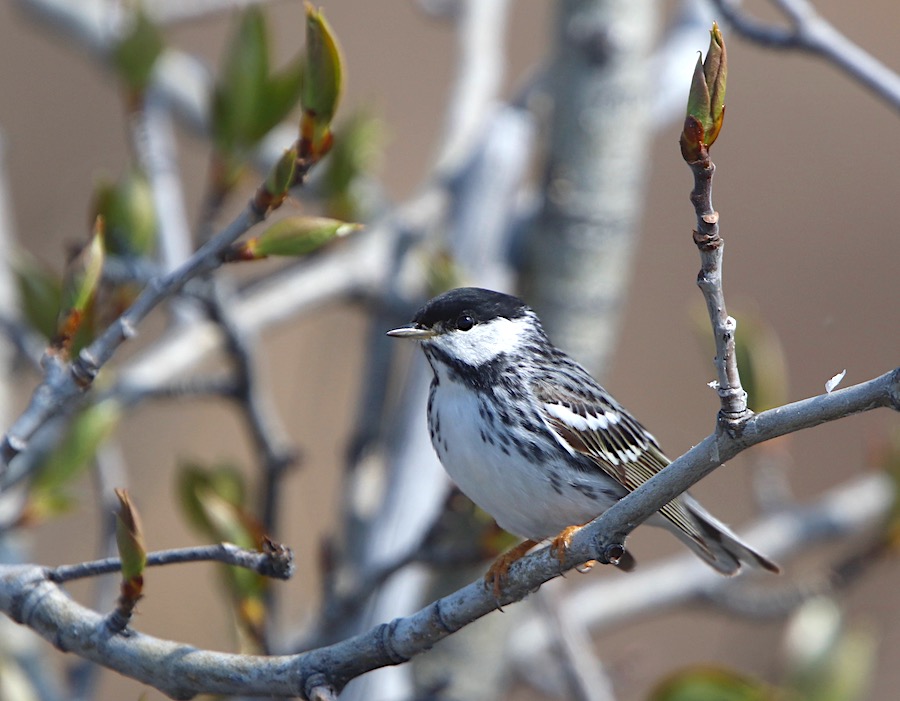 territorial Blackpoll Warblers
territorial Blackpoll Warblers
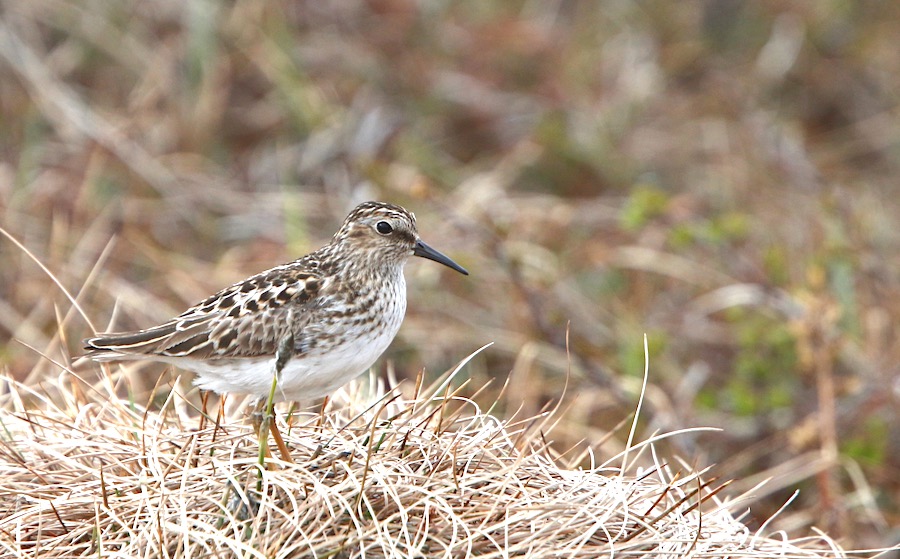 and Least Sandpipers (and a great encounter with a Northern Hawk-Owl)
and Least Sandpipers (and a great encounter with a Northern Hawk-Owl)
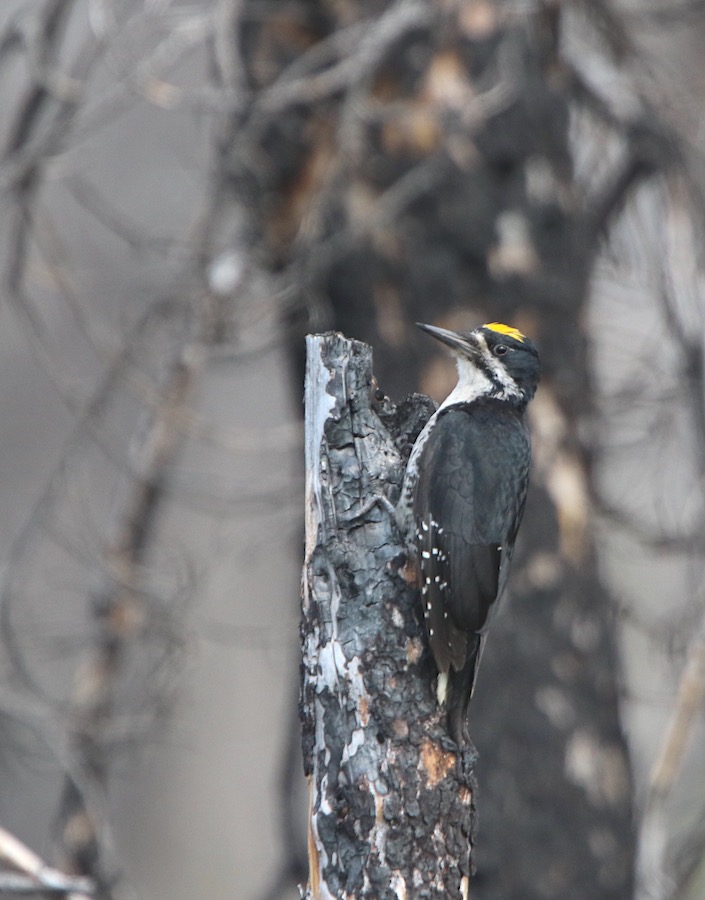
and as we drove south back to Anchorage we stopped for a very rewarding Black-backed Woodpecker that was hammering away on trees in a recently burnt patch of forest.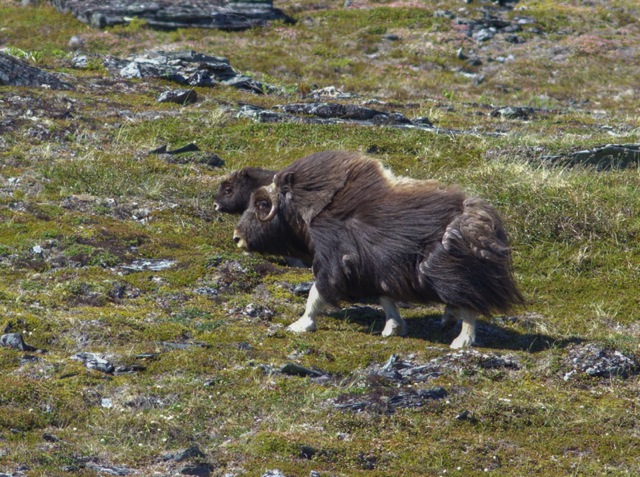
Out in Nome the birding really kicked into high gear, with roving Muskox,
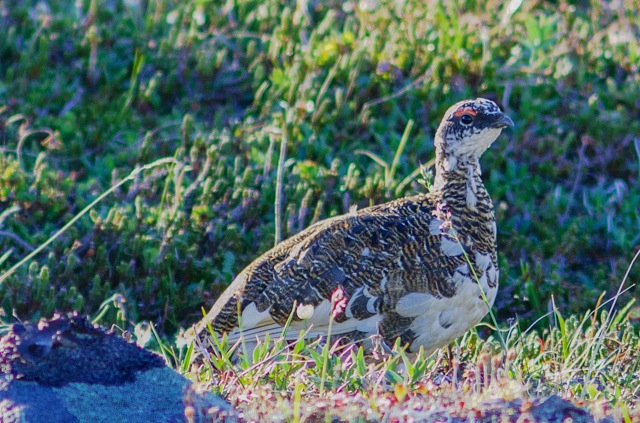
close views of Willow and Rock Ptarmigans,
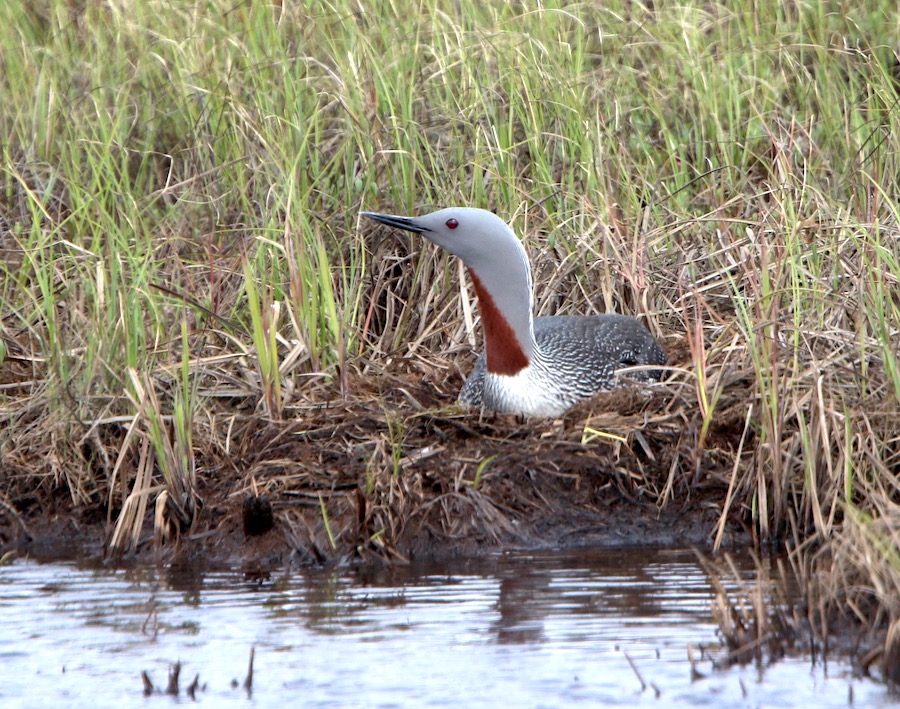
breeding Red-throated
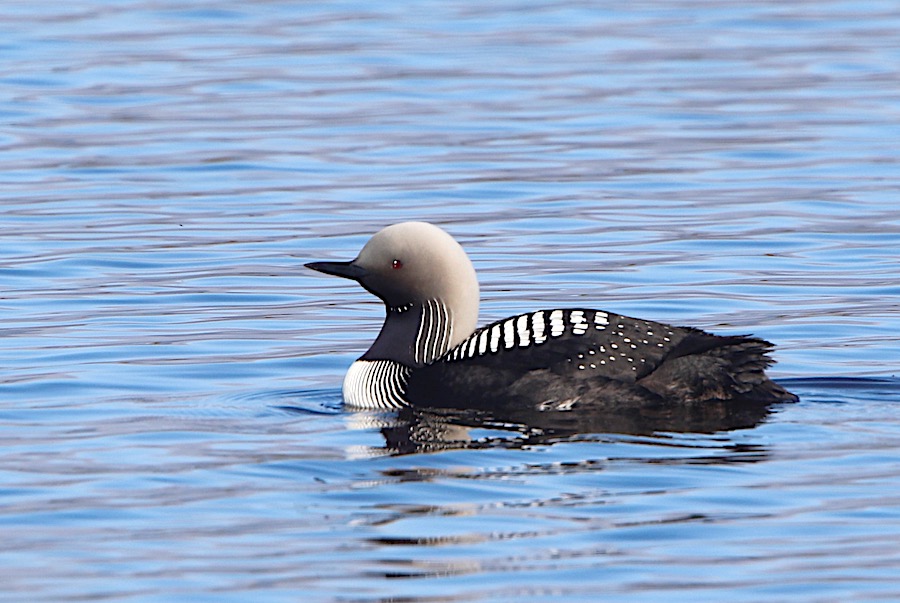 and Pacific Loons
and Pacific Loons
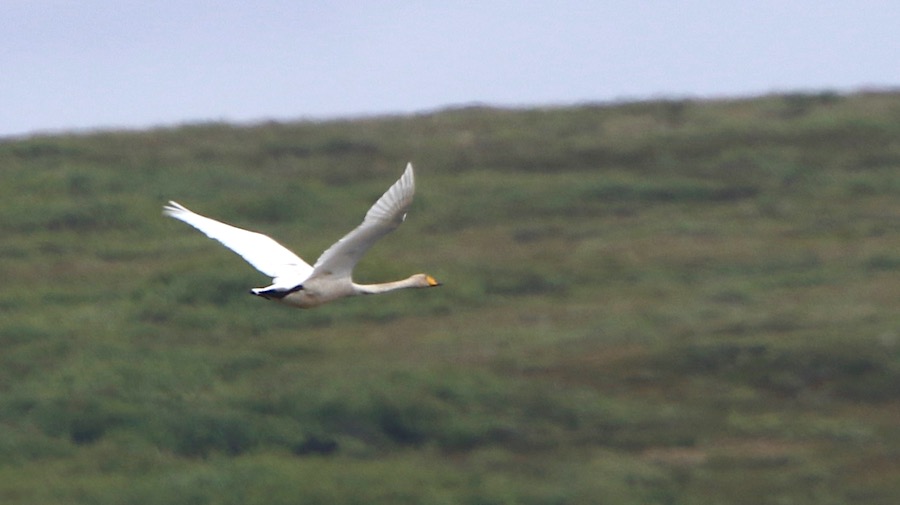
and a completely unexpected Whooper Swan!
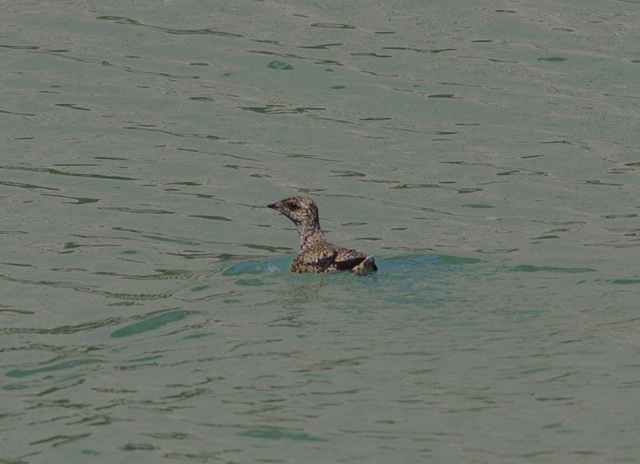
We capped the trip off in Seward, with Kittlitz's Murrelets paddling around in glacial waters,
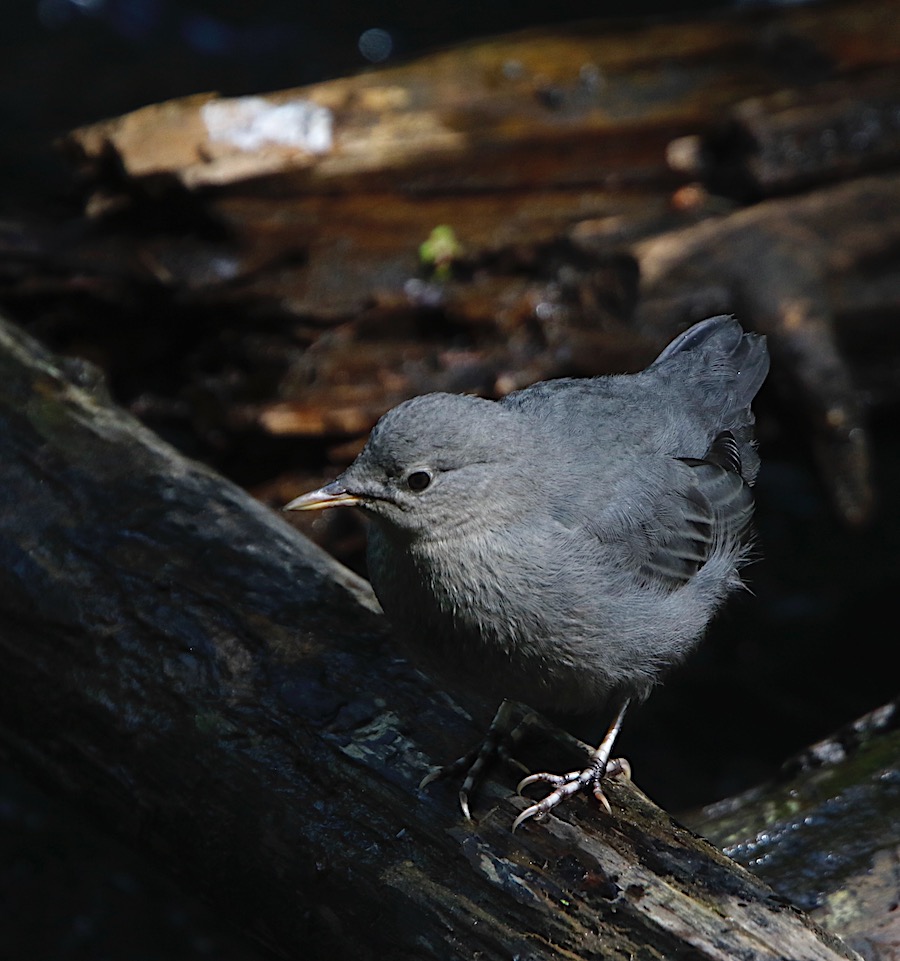 American Dippers on salmon-choked streams
American Dippers on salmon-choked streams
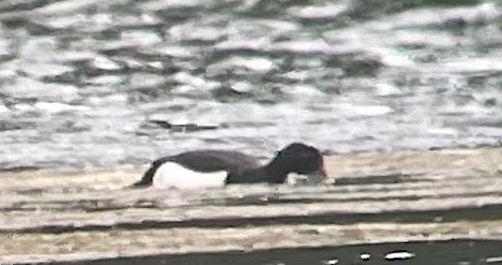
and a stake-out drake Tufted Duck on the Kenai Peninsula.
Barrow was still largely locked in winter, with significant sea ice and a lot of iced-over ponds.
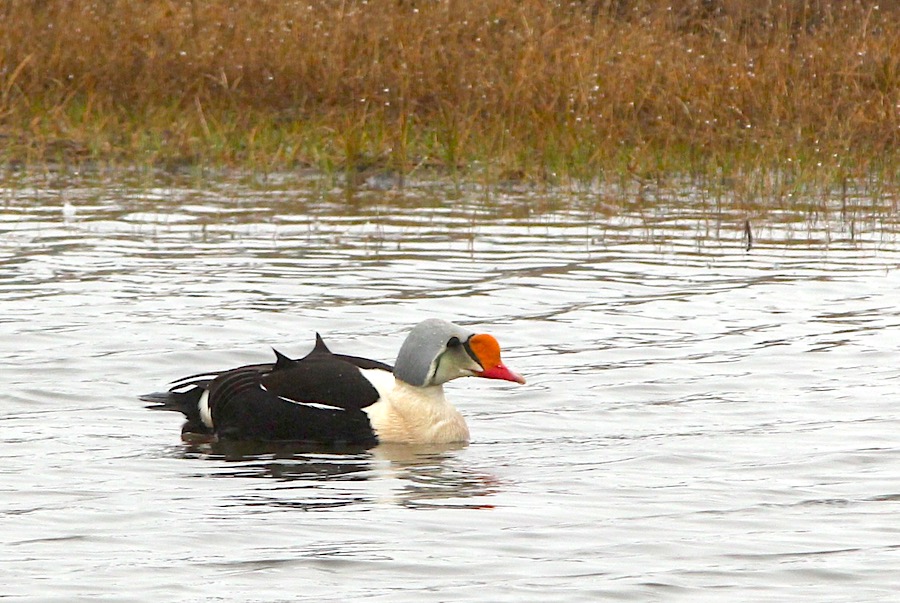 Nevertheless, we turned up the set of ridiculously ornate drake King Eider
Nevertheless, we turned up the set of ridiculously ornate drake King Eider
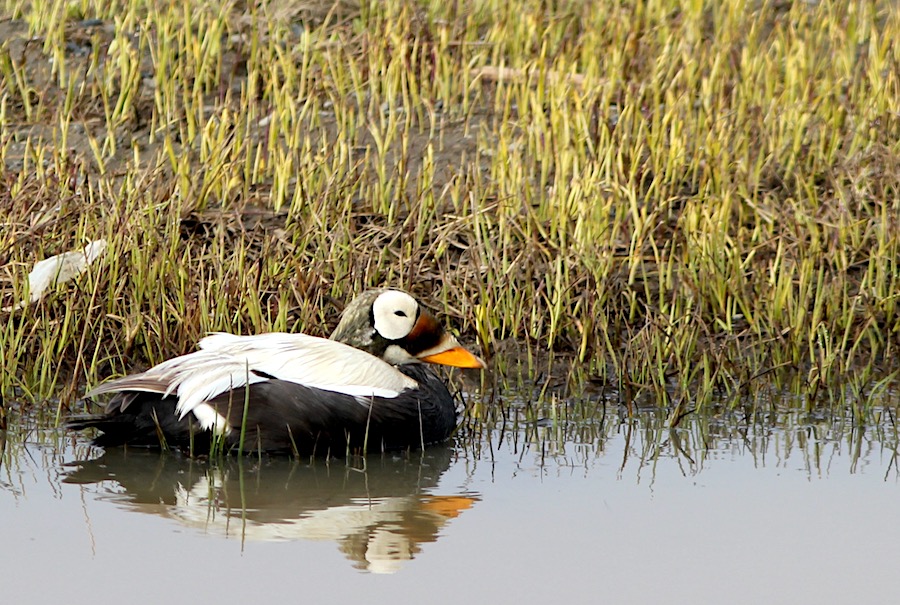
and Spectacled Eiders,
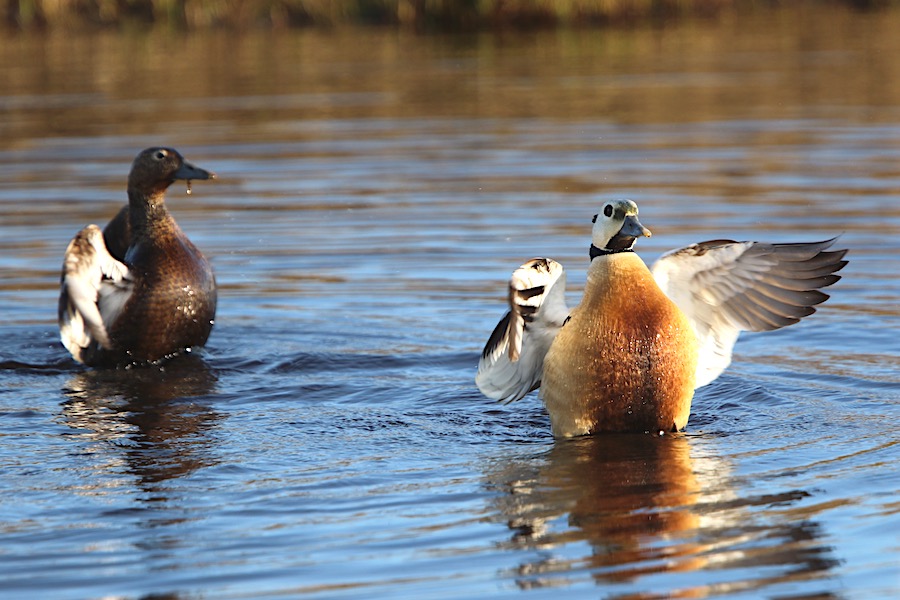
as well as Stellar's Eiders.
Lots of breeding shorebirds including a surprise Red-necked Stint
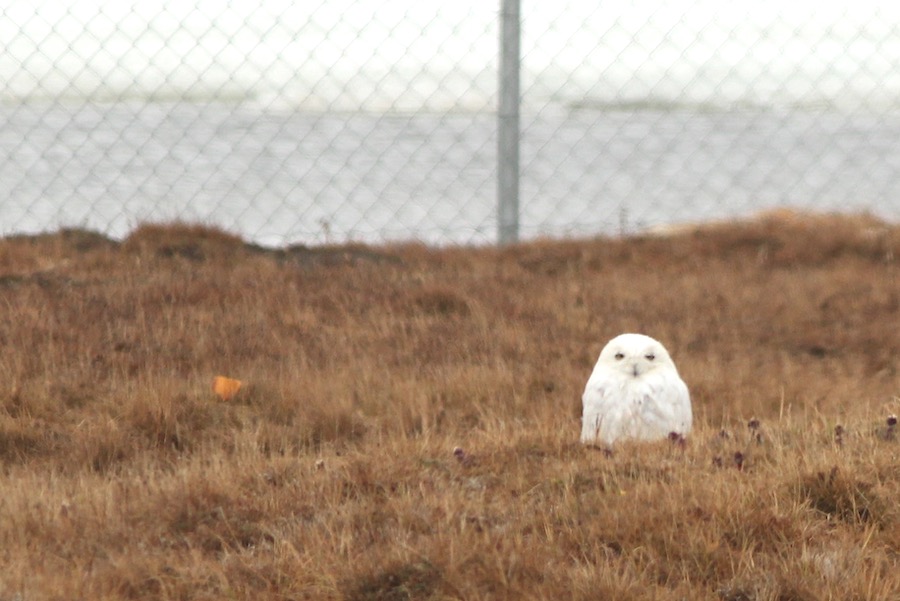
and our obligatory Snowy Owl. A herd of well over 700 Walrus riding the breaking-up sea ice on our last afternoon provided an amazing cap to the trip!
https://secure.wingsbirds.com/tours/alaska-majesty-north/
July 1:
Jake Mohlmann reports from Alaska
We recently wrapped up a successful WINGS tour through some of the most scenic parts of Alaska.
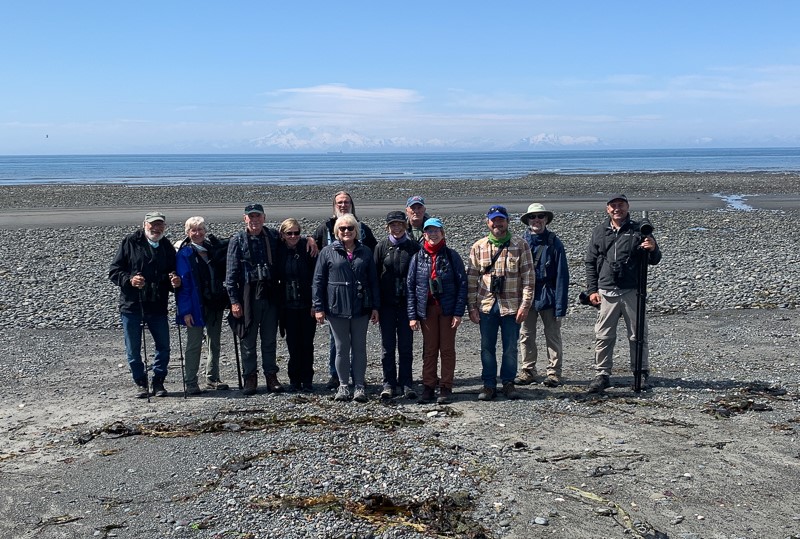
A new area was explored for the first time on this tour as the group searched the shorelines and bays around Homer, a scenic coastal town replete with its famous spit.
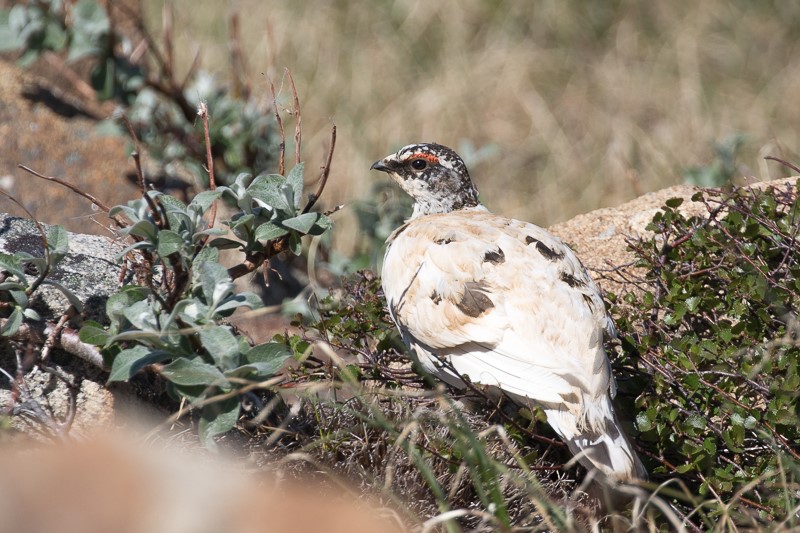
In Nome we searched the other-worldly rocky tundra near Woolly Lagoon for a couple of hours and eventually were rewarded with what some voted the bird of the trip when Greg spotted a Rock Ptarmigan trying its best to blend in to the surrounding landscape.
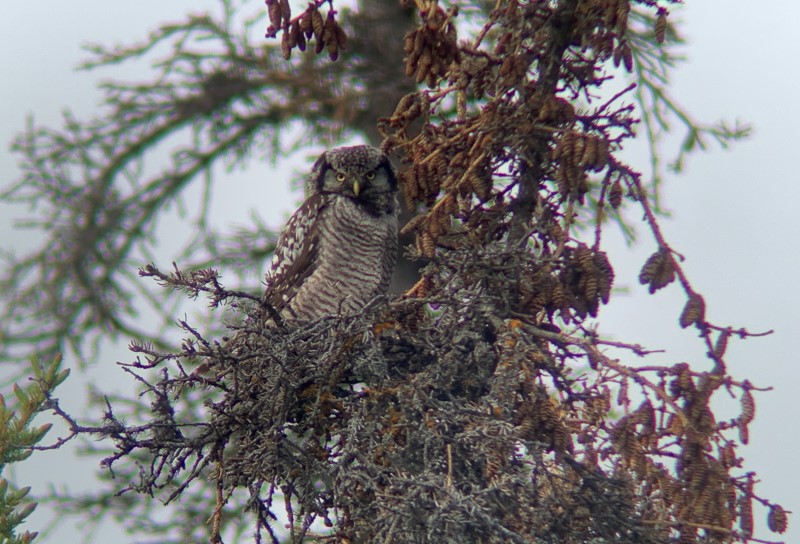
Along the Denali Highway several highlights were tallied, including a perched Northern Hawk Owl that was being harassed by a mob of American Robins and Varied Thrushes that were obviously upset this raptor was perched nearby.
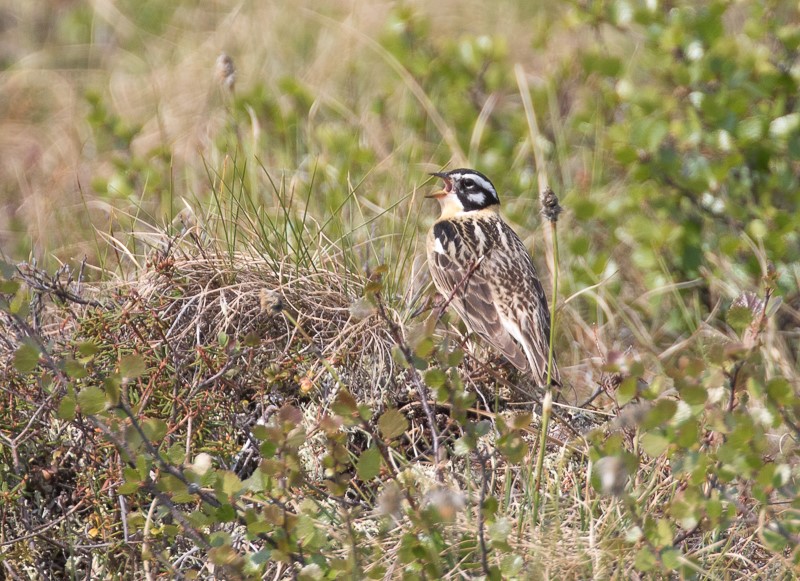
We strolled through the hummocky tundra a mile or so from the road to an area where after some searching tracked down a dapper male Smith’s Longspur newly arrived on its breeding grounds.
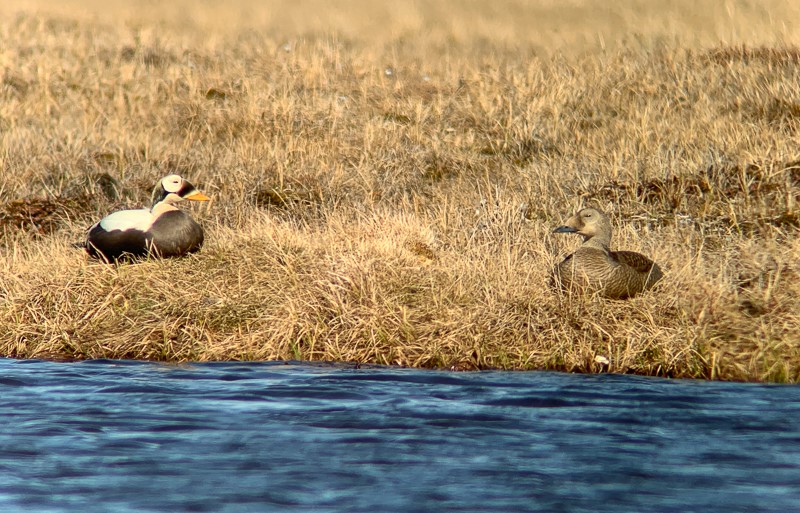
In Utquiagvik the ice was packed for a mile up to the beach which limited our seawatching, but this gave us extra time to get a more intimate experience with the waterfowl staging for breeding grounds including a very confiding pair of Spectacled Eiders.
June 20:
Ethan Kistler reports:
The Minnesota and North Dakota tour went beyond expectations. We dodged most of the rain, had fantastic sightings, and an overall wonderful trip. On the warbler front, we tallied 25 species including the holy grail - Connecticut - along with Cerulean, Hooded, Mourning, and Golden-winged. Sparrows didn’t disappoint either with our tally reaching 17 species including beauties such as Henslow’s, LeConte’s, Nelson’s, and Baird’s. The Northwoods provided point-blank views of a gorgeous pair of Great Gray Owls while the potholes and prairies region, after some much needed rain, was alive with vast numbers of waterfowl, grebes, and shorebirds along with some specials including Yellow Rail, Greater Prairie-Chicken, and Sprague’s Pipit. It was the kind of trip you could always hope for!
This American Bittern was right along a rural road in North Dakota. When we stopped, it immediately 'froze' hoping we didn't see it.
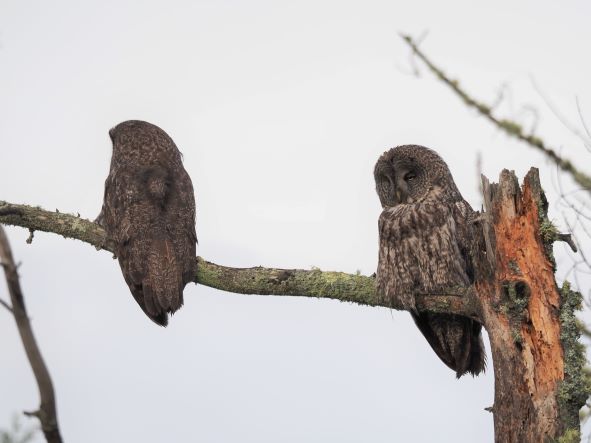
One of the first species we saw upon arriving at Sax-Zim Bog was this pair of Great Gray Owls, which perched conspicuously near the road allowing for extended views.
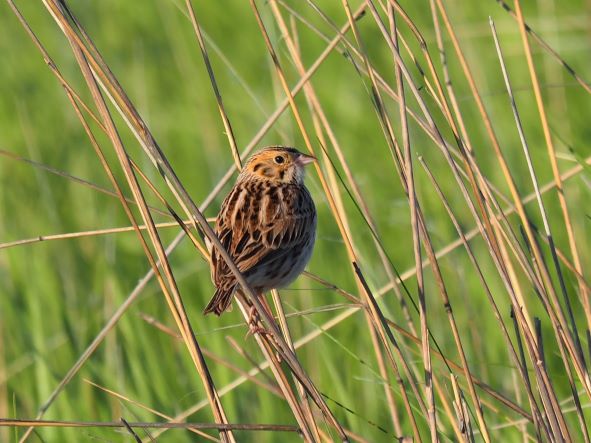
This Baird's Sparrow was already singing upon our arrival.
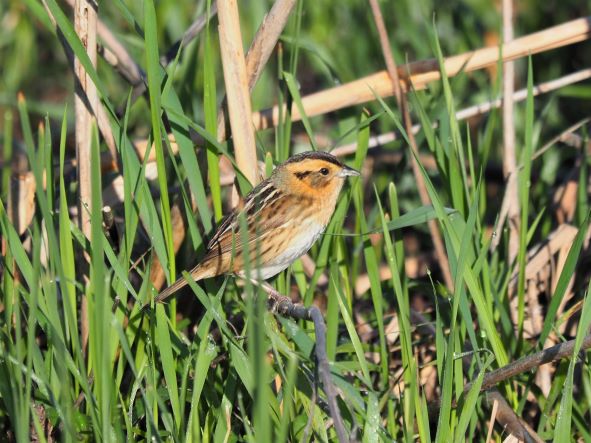
The gorgeous Nelson's Sparrow was very obliging for photos.

